Philips 156 UBV
History
The Philips 156 UBV was produced since 1942 in the dutch Philips factories that were under german control. It was used by the Wehrmacht during World War II at the front, but not for military purposes, but to supply soldiers with news from home or entertainment. There were radio stations that were explicitly directed towards soldiers, the most known one is Radio Belgrad. With these radio stations and its entertainment the idea was to keep the spirits of the soldiers high.
Catalogue Entry: The square soldier. A radio in the midst of war
1. Prologue (1)
This prologue is written from the perspective of a radio in a warehouse with a lot of used radios somewhere in Germany. This unknown radio explains his experiences with the Philips 156 UBV during the time that the Philips was in that warehouse until his travel continued.
He (2) was inconspicuous, almost spectacularly unspectacular. He was made of wood that was painted grey. The corners were reinforced with metal. On the front were the volume control, the on/off switch, the tone control, and the wavelength switch. It was just a wooden box with buttons and cutouts for the sound and the dial. This effect was even enhanced by a wooden flap that could be used to cover the front. When closed, you couldn’t even recognize that it was a radio. There was also a carrying handle on the top. (3) Due to its rather rustic and unaesthetic appearance, it was clear to everyone that this was not a normal radio that would be placed in a living room, but one that emphasized compactness, robustness, and mobility. He was different. This was also characterized by the fact that he was more flexible than most others. He could be powered by electricity, but also worked with a rechargeable battery. (4) He had five tubes and was able to receive long waves, medium waves, and short waves. For a long time, relatively little was known about him. We only knew that he had been created in Eindhoven around 1942. He told us very little about how he was used, only that his main mission was to entertain people. In this respect, he was like the other radios. In the short time he was here in the warehouse, he was rather reserved and shy. The competition between all the radios to see who would be put in the shop window and sold next didn’t seem to interest him in the slightest. If he hadn’t been placed directly in front of me, I wouldn’t have noticed him at all. At times it was as if he had come from a completely different world and was only living for himself. After a while, rumors started to circulate that he was a radio of the Wehrmacht, which had served at the front during the war. Used as a troop-support receiver (5) to keep the soldiers happy. This was a red flag to many radios here in the warehouse. Some radios distanced themselves from this point on, as they wanted nothing to do with radios of this type, but for others, fascination prevailed. However, like everything else, this did not seem to interest him one bit. He didn’t let anything get to him and seemed to have a strong personality. Then one morning he was gone, without warning, replaced by a radio that was similar to him in some ways, but much nicer. Only his diary, left behind, provided information about his thoughts, feelings, and experiences. Somehow, I still like to think of him and wonder where he is right now. Inconspicuous, yet strange, unimpressive, yet experienced so much, the Philips 156 UBV.
2. The square Soldier: A radio in the midst of war
Unknown date in 1942 in Eindhoven So, I’m supposed to contribute to the war? What exactly my mission is and where I will be sent is not yet clear to me. However, I don’t think it will be a particularly important role, my appearance is too plain for that. I’m just a wooden box with buttons. I cannot deny a certain jealousy towards the Volksempfänger or the Torn.E.b.. Both have been in service much longer and already from their appearance, you can see their importance. One is a metal field radio with various connections, buttons, and displays, suitable for field use. The other, on the other hand, is a simple piece of furniture that has its importance on the home front. It’s hard to know my place and the meaning of my existence in this whole situation.
A few days later Today I was finally enlightened about what my mission is. I almost blew my loudspeaker; I actually have to go to the front. I am supposed to ensure that the morale of the soldiers at the front is kept up. (6) In addition, it is important for the further course of the war to form a fighting community. (7) I’m supposed to be responsible for these tasks, but I only get more precise details when I’m at the front.
Day of arrival at the front Today I arrived at the front and was told exactly my area of responsibility. The feeling of fear was indescribable. It was worse than I could have imagined in my worst nightmares. Pain and horror adorned the soundscape and I asked myself how such a small and unspectacular radio like me could compete with guns and bombs. However, I didn’t have time to think about this question any longer, because I was informed about my task as soon as I arrived. Imagined listening community is the keyword. Listening to the radio together is supposed to create a sense of community among the listeners. (8) I am supposed to help bridge the distance between the home front and the war front, thus creating a bond between the soldiers at the front and the people at home. (9) This is to happen by means of specific radio programs, such as the wish concert for the Wehrmacht, where soldiers are allowed to wish for songs which are then played. (10) I am also supposed to help keep people happy with light entertainment because neither the people in Germany nor the soldiers at the front are able to concentrate long enough for a more demanding radio program due to the pressure and stress of the war. (11)
Christmas 1942 Today a very big event took place to strengthen the bond between the war front and the home front and I am in a way proud of my own achievement. For Christmas, the Weihnachtsringsendung was broadcasted where 30 transmitting stations from Stalingrad to the Atlantic coast and from Scandinavia to North Africa were set up to celebrate Christmas together. (12) Each station spoke and then Christmas carols were sung together. (13) Isn’t that wonderful? I was the link between the people sitting in their warm living rooms and the people who must stay here in the cold mud.
1943 ♫ Vor der Kaserne, vor dem großen Tor Stand eine Laterne und steht sie noch davor So woll’n wir uns da wiedersehn Bei der Laterne woll’n wir stehen Wie einst Lili Marleen ♫
Pressure is what I feel. While singing, I realized once again what a responsibility I have. I don’t really feel like singing, but bringing people some distraction and joy gives me energy and motivates me, I have found the meaning of my existence. The soldiers, gathered around me, sing the song Lili Marleen every evening. I receive the signal daily from 21:56 to 22:00 from the military station in Belgrade. (14) Radio Belgrade is one of the most popular stations at the moment, which has to do with the fact that the presenters partly take care of the music composition and the transitional lyrics themselves, which is an antithesis to the strict Reichssender. (15)
December 1944 The last few months have been a disaster. We are losing more and more ground and the situation is getting worse. Since this month, even some German radio stations, which can only be received at night, have been questioning the government for making too many mistakes. (16) It is a German underground radio station behind the German lines, which provides the soldiers with information about the war situation. (17) I notice how the soldiers have built up more and more trust in the station and rely on its information. (18)
End of April 1945 For about four months I was able to receive the signals but for a few days now nothing has been heard. The suspicion is spreading that it was an Allied trap.
A few days later Today I got confirmation that 1212 was indeed a camouflaged station belonging to the Americans. (19) They were supposedly broadcasting from Junglinster, giving messages and orders. (20) This news was like a slap in the face. I was sent to the front to strengthen cohesion and to keep up the morale of the soldiers. The soldiers’ stamina was to be as high as possible. In the end, however, I was used by the Allies to make the soldiers doubt our leadership and give up. I failed.
Months after the end of the war After some time, I’m getting back to you, dear diary. After the last difficult months full of losses, the war ended with our defeat. I know that there are many reasons for the failure, but I can’t help the feeling that I also played a part in it. How exactly the end came I do not know. One day I was packed up and only unpacked in Germany, which also prevented me from writing down my thoughts and experiences for a longer period. When I first looked around, I was shocked by the extent of the destruction. I don’t know what to do with myself and what to do next.
A few days later A few days have passed, and, in the meantime, I have been taken to a kind of warehouse. There are a lot of other radios around me. I’m ashamed of my appearance, you can see that I served in the Wehrmacht, and probably the others think that I didn’t do enough to avert defeat. I tend to keep a low profile, don’t want to offend anyone, I want to avoid arguments at all costs. Besides, now I simply lack the energy to discuss with other radios and indulge in the competition of who will be displayed next in the showcase for sale. I’m too busy with myself right now and with the question of the meaningfulness of my existence. What function am I supposed to perform at all? Because of my appearance, it is impossible for me to find a place in a living room like all the other normal radios. What is to become of me? Will I possibly simply be disposed of?
One week later In the last few days, many radios left the warehouse. There seems to be a great interest in used radios. New arrivals explained that the Allied troops were rather skeptical about the use of radios, fearing a German revolt. (21) Radio production is said to have been partially halted, and radios were also confiscated. (22) Due to the radio shortage, military equipment is also said to be popular (23), a possible glimmer of hope?
One day later Where do I begin, dear diary? Last night was extremely eventful. It all started when I was taken away from the storage facility. I was firmly convinced that the store owner had finally had enough of me and wanted to make room for a radio with a higher chance of being sold. I could not even blame him for this, I would probably have done the same. I had accepted my fate; I was put down on a table and fell asleep. To my surprise, I woke up. I was standing in front of a windowpane and couldn’t believe my eyes when I looked into the reflection. The ugly grey box turned into a dark brown radio with new buttons. I looked like a standard radio meant to be used in the living room. (24) Only the scar of the handle reminds me of my past. Furthermore, my circuitry was converted to common types of tubes, and a power cable was attached. (25) Through all the excitement about my appearance, I had not even noticed which window it was at all that I was looking at myself in. It was the shop window.
And so ends the diary of the Philips 156 UBV. Behind the unspectacular appearance lies a spectacular background story. The wartime radio became a domesticated radio, and it is this transformation that makes the Philips 156 UBV so special.
Footnotes
(1) The original Object Biography consisted of a diary in which the Philips 156 UBV itself recounted its experiences. For the catalogue entry, however, I decided to change the perspective and have someone external report on the Philips 156 UBV. For the second draft I changed it back.
(2) For narrative reasons, masculine pronouns are used for the Philips 156 UBV.
(3) See Pictures of the Philips 156 UBV in the chapter: Pictures of the old version of the radio
(4) 156 UBV, in: radiomuseum.org, URL: https://www.radiomuseum.org/r/philips_156ubv_156_ubv.html# (last accessed: 23.6.2023).
(5) 156 UBV (note 4).
(6) Ross, Corey, Media and the Making of Modern Germany. Mass Communications, Society, and Politics from the Empire to the Reich, Oxford : Oxford University Press, 2008, here p. 360.
(7) Marßolek, Inge, Radio in Deutschland 1923-1969. Zur Sozialgeschichte eines Mediums, in: Geschichte und Gesellschaft 27/2 (2001), p. 207-239, here p. 220.
(8) Birdsall, Carolyn, Nazi Soundscapes, Sound, Technology and Urban Space in Germany, 1933-1945, Amsterdam : Amsterdam University Press, 2012, p. 109.
(9) Birdsall, Nazi soundscapes (note 8), p. 113.
(10) Marßolek, Radio in Deutschland (note 7), p. 220; Example of the Wish Concert for the Wehrmacht: Wunschkonzert Für die Wehrmacht, in: archive.org, URL: https://archive.org/details/lp_wunschkonzert-fur-die-wehrmacht_various-unknown-artist/disc1/01.01.+Des+Großen+Kurfürsten+Reitermarsch%3B+In+Einer+Nacht+Im+Mai%3B+Das+Kann+Doch+Einen+Seemann+Nicht+Erschüttern%3B+Conference%3B+Das+Lachende+Saxophon%3B+Couplet%3B+Schlafe+Mein+Prinzchen%2C+Schlaf’+Ein%3B+Gute+Nacht+Mutter%3B+Heimat+Deine+Stern…mp3 (Last accessed 05.11.2023).
(11) Ross, Media and the Making (note 6), p. 361.
(12) Ross, Media and the Making (note 6), p. 372.
(13) Example for the Weihnachtsringsendung from 1942: Weihnachtringsendung 1942 - mit Bildern unterlegt, in: youtube.com, URL: https://www.youtube.com/watch?v=91ruylm9rAM (Last accessed 05.11.2023).
(14) Ross, Media and the Making (note 6), p. 368.
(15) Bonacker, Max, Goebbels’ Mann beim Radio. Der NS-Propagandist Hans Fritzsche (1900-1953) (Schriftenreihe der Vierteljahrshefte für Zeitgeschichte, 94), München : Oldenbourg Verlag, 2007, here p. 172.
(16) Barnouw, Erik, Propaganda at Radio Luxembourg : 1944-1945, in: Short, Kenneth (ed.), Film & Radio Propaganda in World War II(Routledge Library Editions : WW2, 9), London : Routledge, 1983, p. 192-197, here p. 195.
(17) Barnouw, Propaganda (note 16), p. 196.
(18) Barnouw, Propaganda (note 16), p. 196.
(19) Balfour, Michael, In Retrospect: Britain’s Policy of “Re-Education”, in: Pronay, Nicholas/Wilson, Keith (ed.), The Political Re-Education of Germany and her Allies after World War II, London/Sydney : Croom Helm, 1985, p. 139-150, here p. 143
(20) Bonacker, Goebbels’ Mann beim Radio (note 15), p. 190.
(21) Campbell, Bruce, The Radio Hobby, Private Associations, and the Challenge of Modernity in Germany (Palgrave Studies in the History of Science and Technology), Hampshire : Palgrave Macmillan, 2019, here p. 268
(22) Campbell, The Radio Hobby (note 21), p. 264.
(23) Campbell, The Radio Hobby (note 21), p. 264.
(24) See Pictures of the new Philips 156 UBV in the Chapter: Pictures of the new version of the radio
(25) Here I base myself on the statements of Albert Wolter, who refers to his own version.
Sound Sources in the Deutsches Rundfunkarchiv
1.Philips156UBV_Empfang einer Abordnung der Besatzung des Lloydampfers Bremen in Berlin
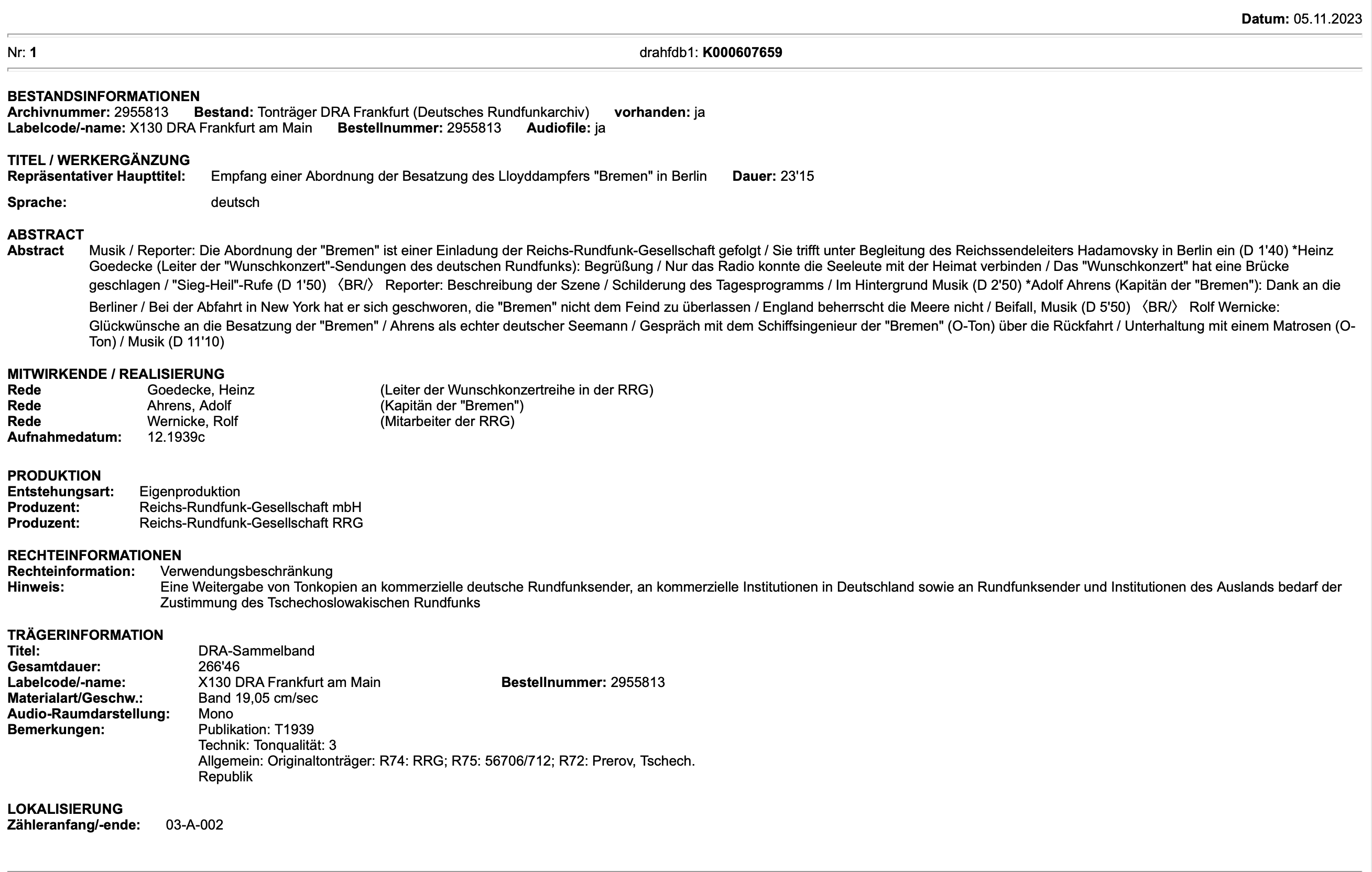
2.Philips156UBV_Wunschkonzert1
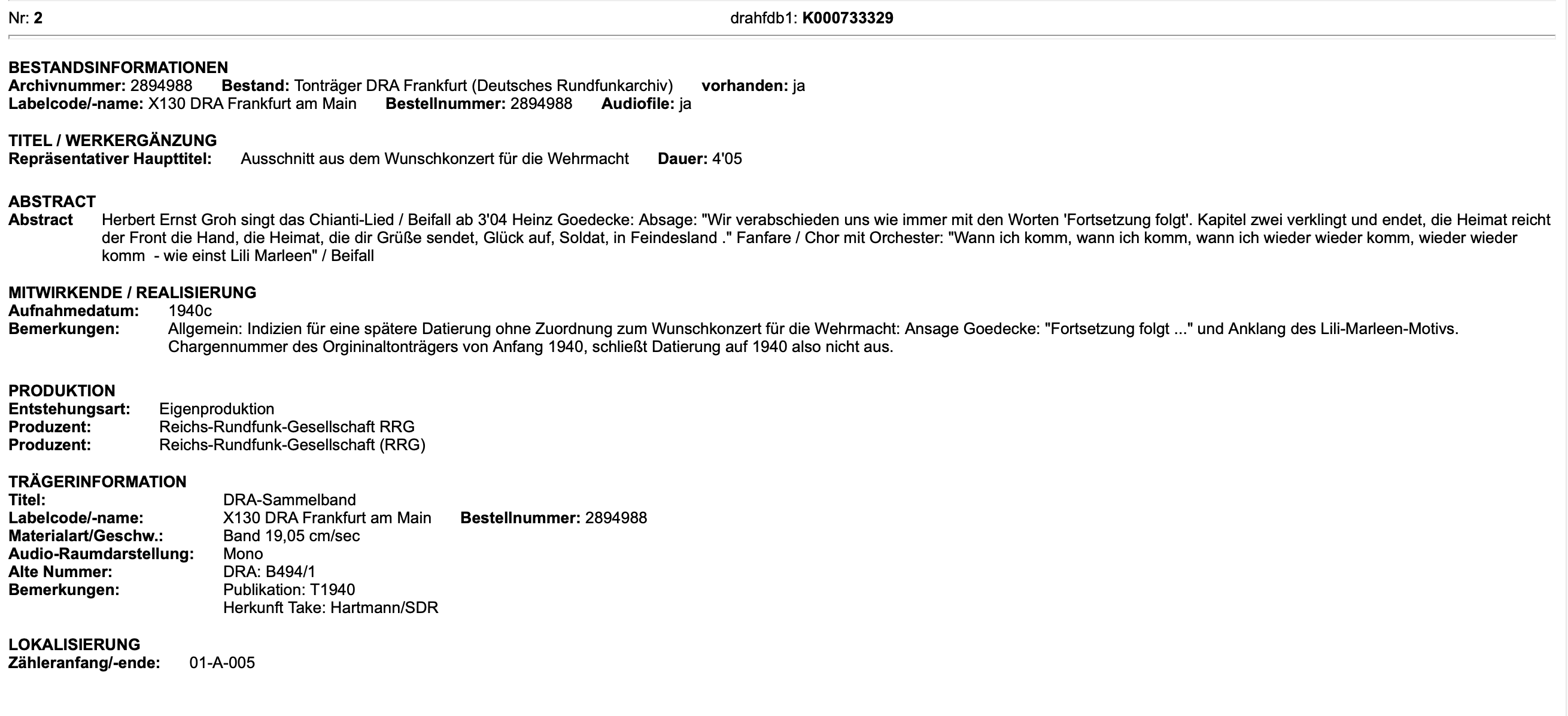
3.Philips156UBV_Wunschkonzert2
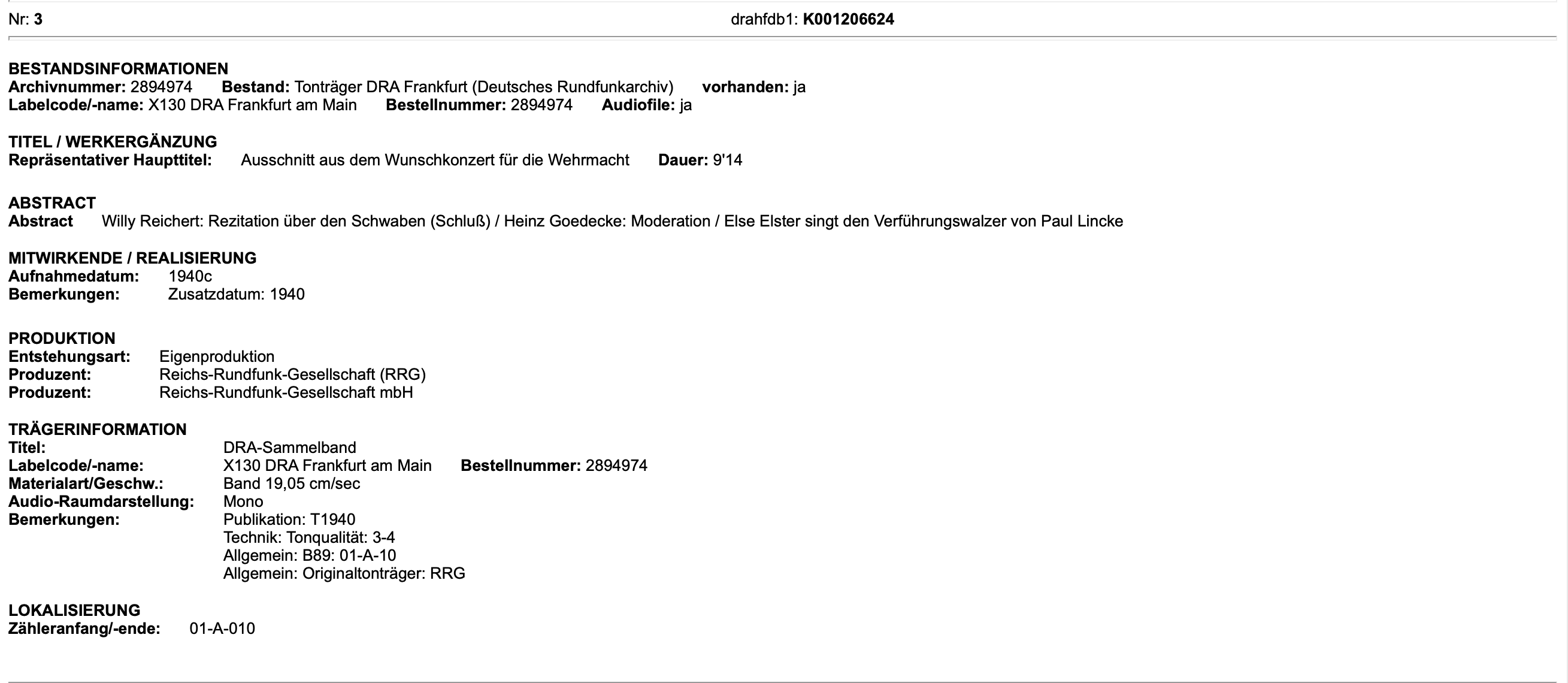
4.Philips156UBV_Wunschkonzert3
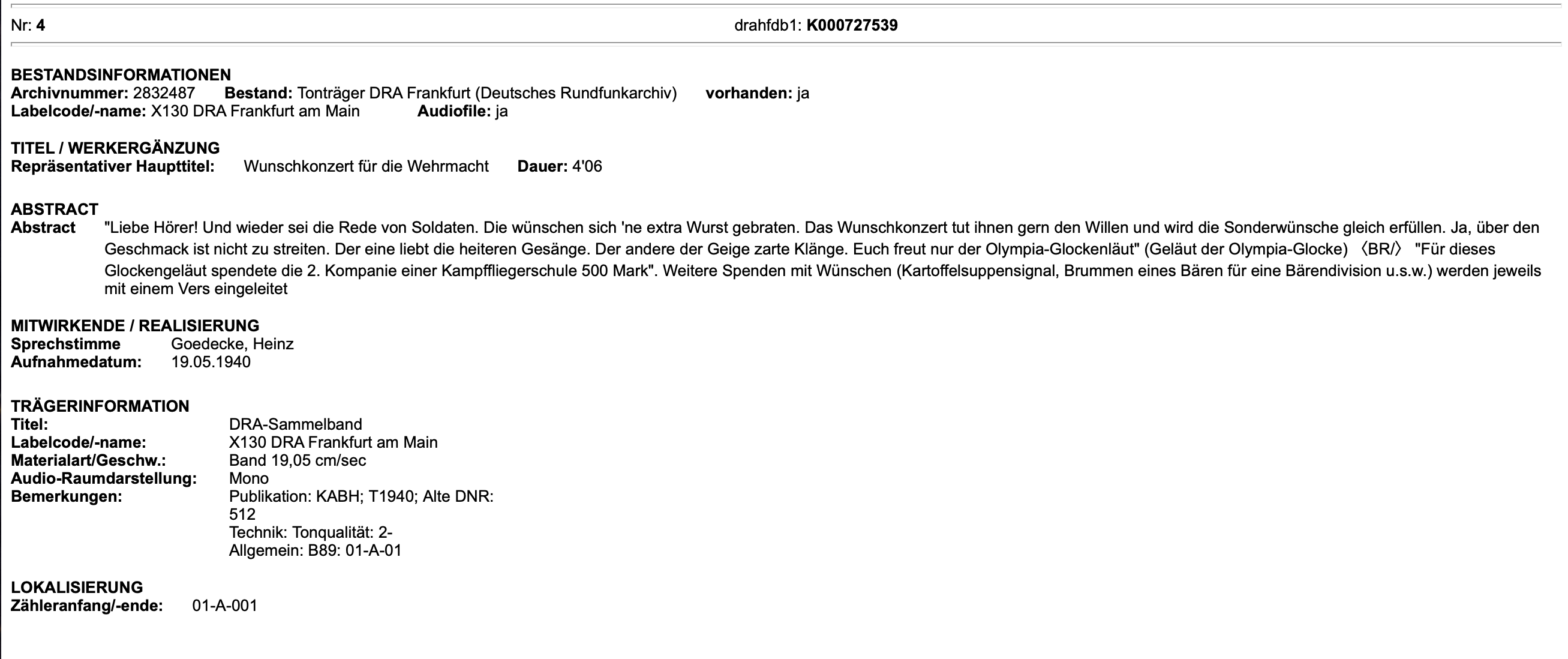
5.Philips156UBV_Wunschkonzert4
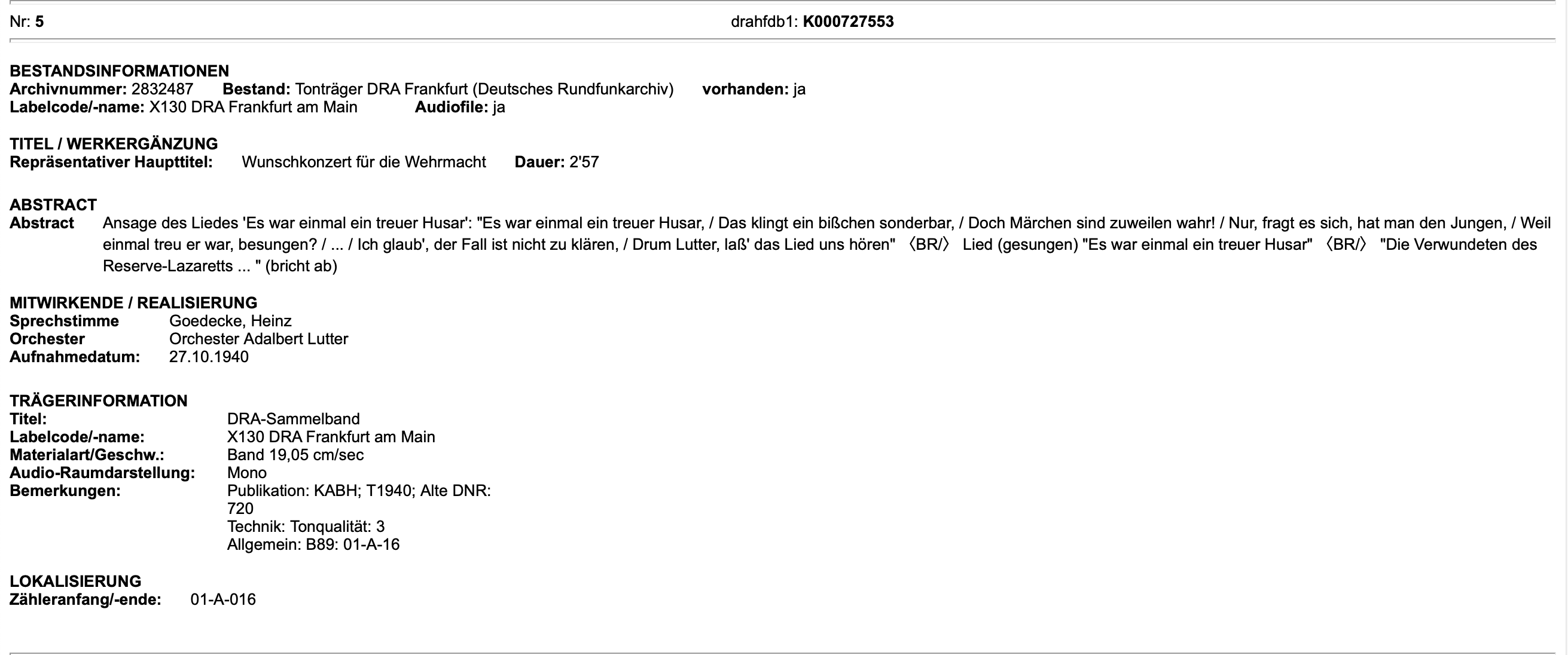
6.Philips156UBV_SpeechGoebbels
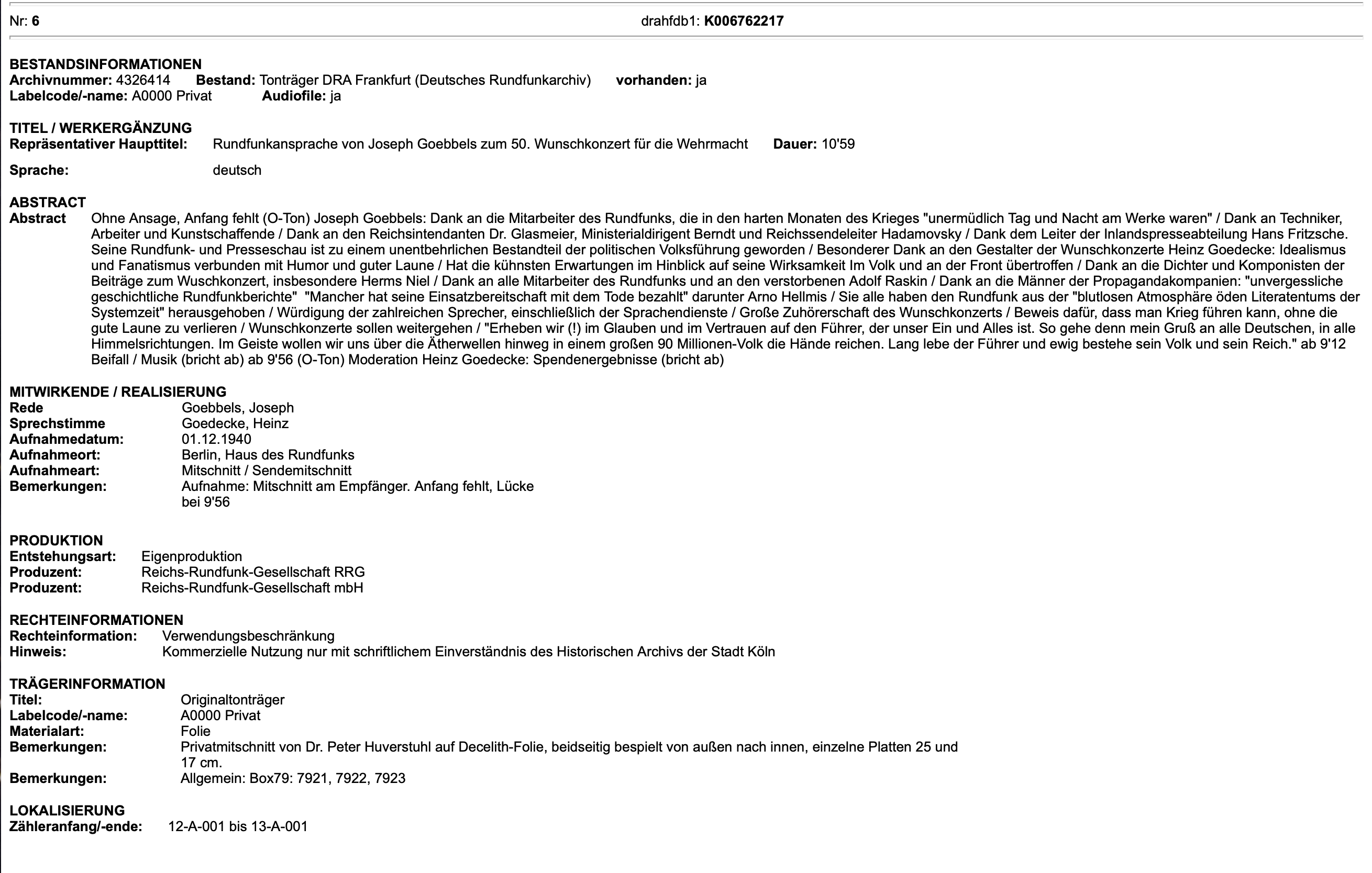
7.Philips156UBV_Wunschkonzert5
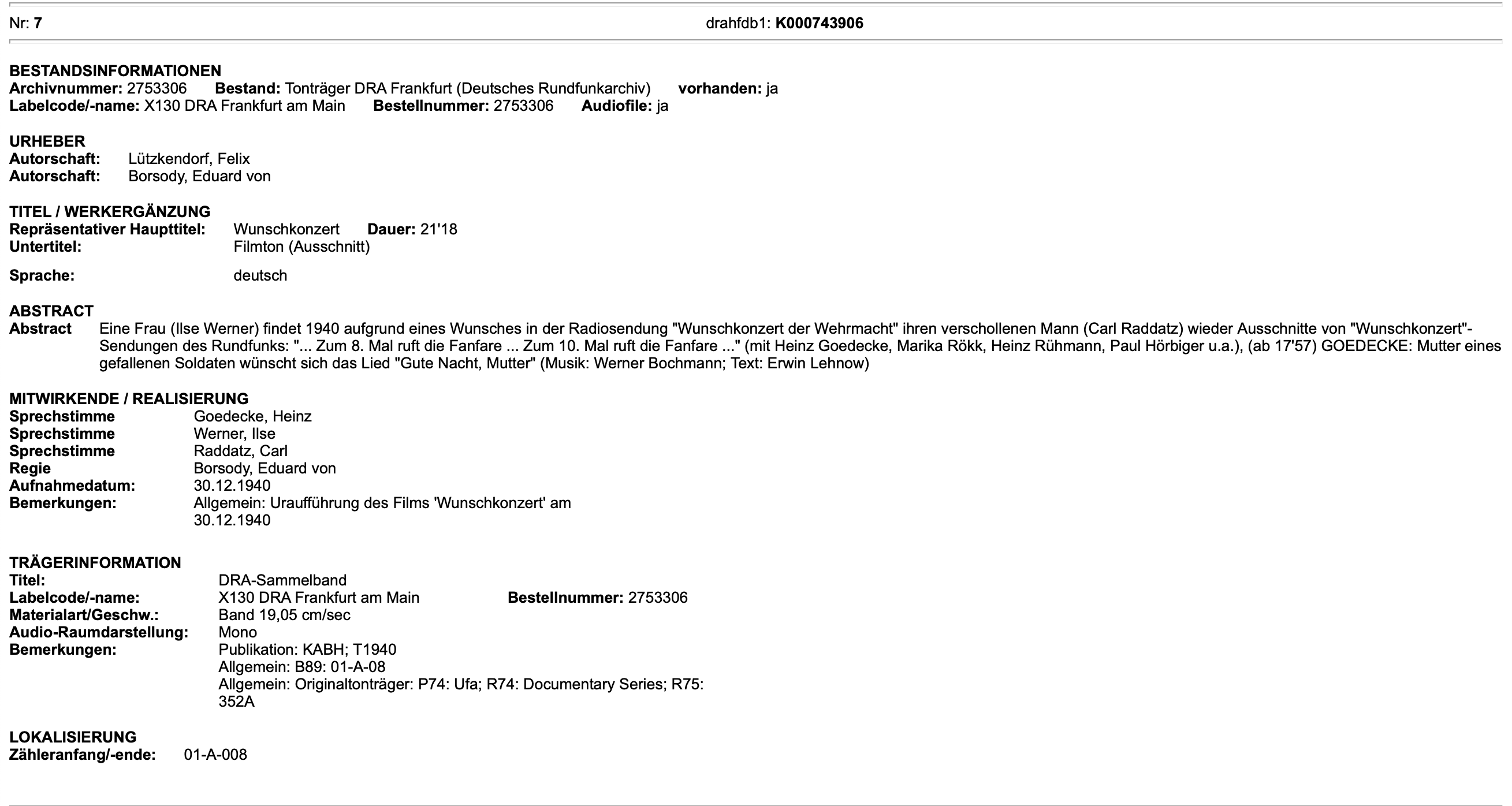
8.Philips156UBV_EntertainmentSoldier
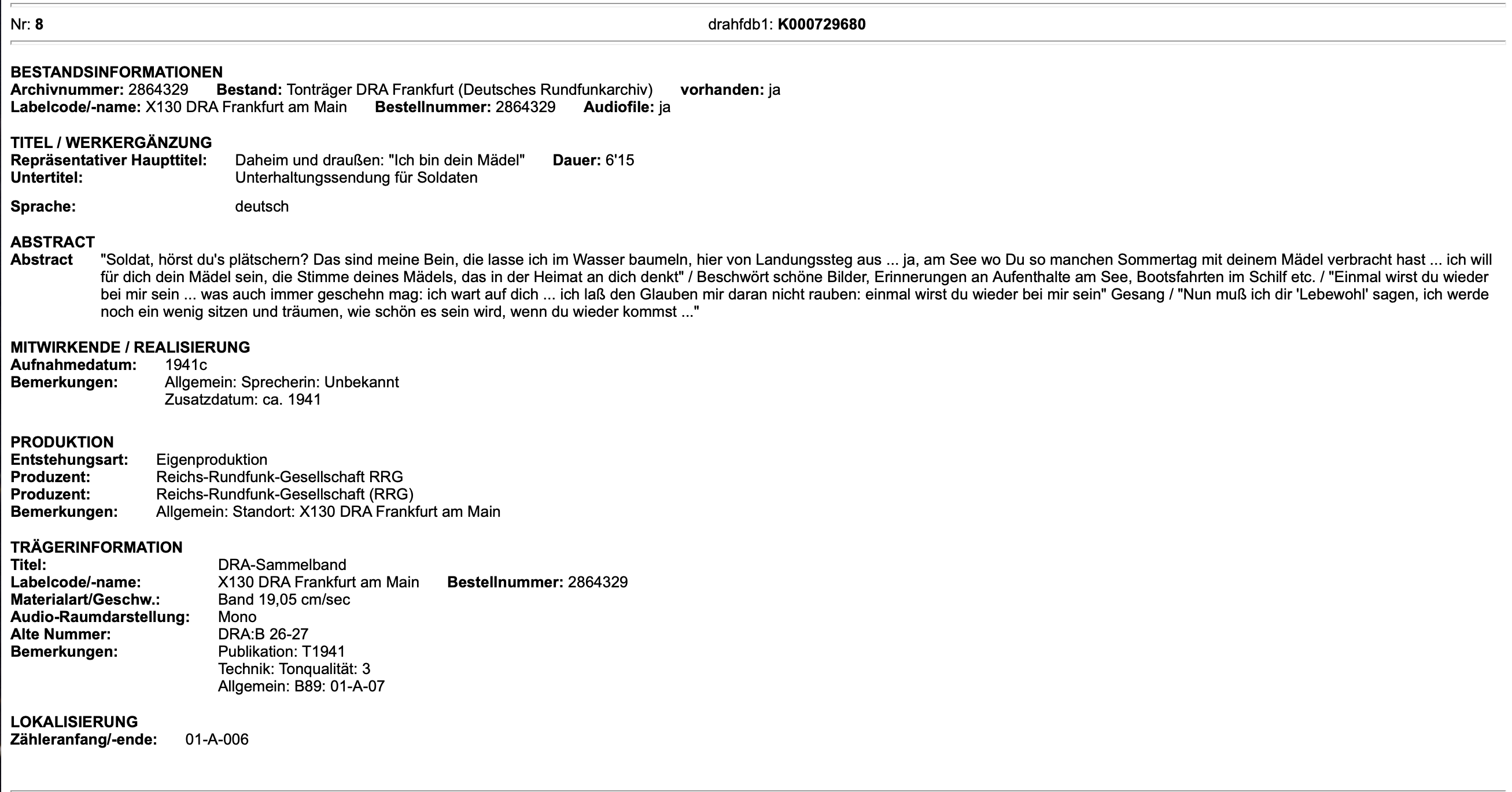
9.Philips156UBV_Wunschkonzert6
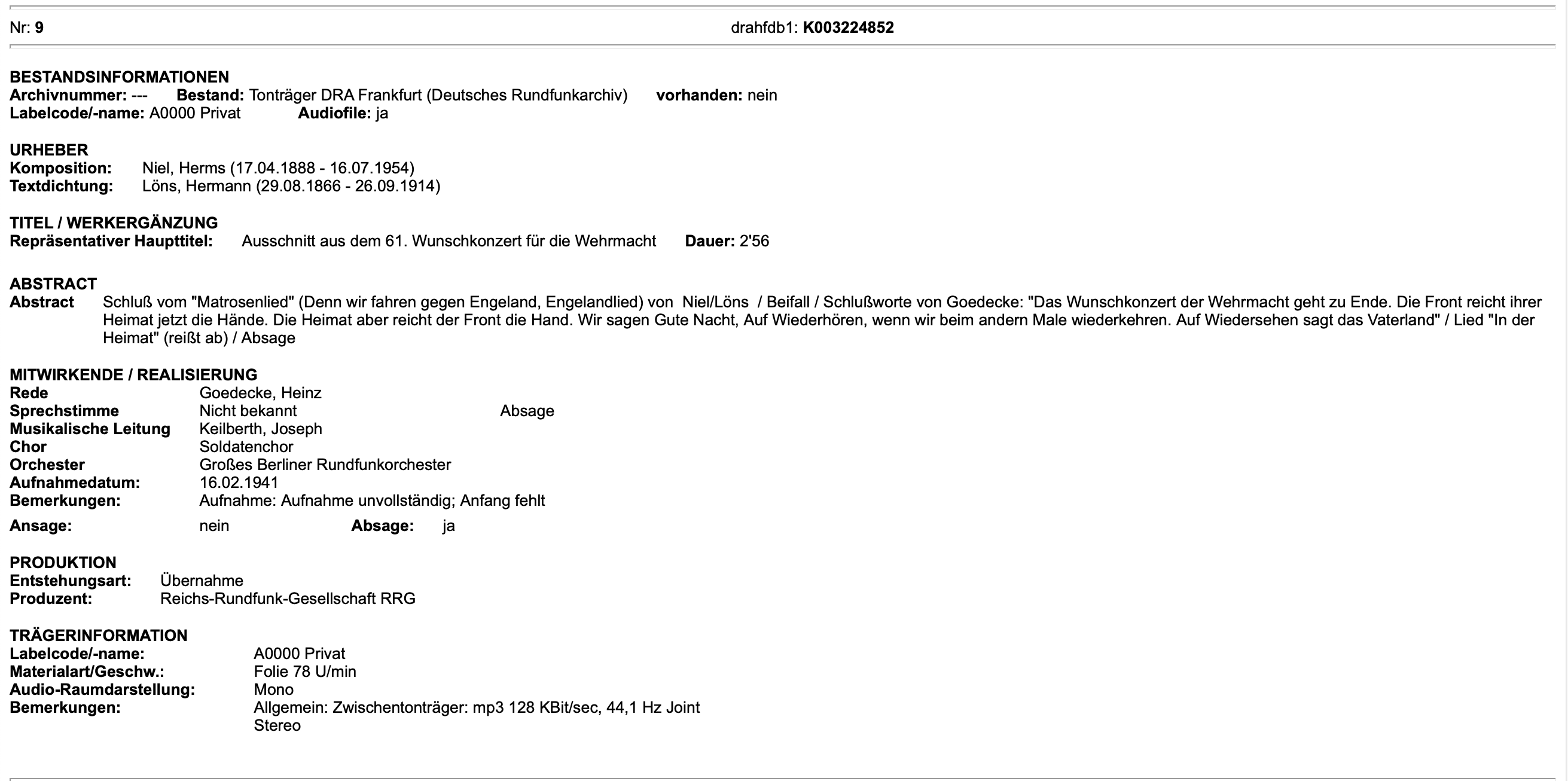
10.Philips156UBV_CharityForWunschkonzert
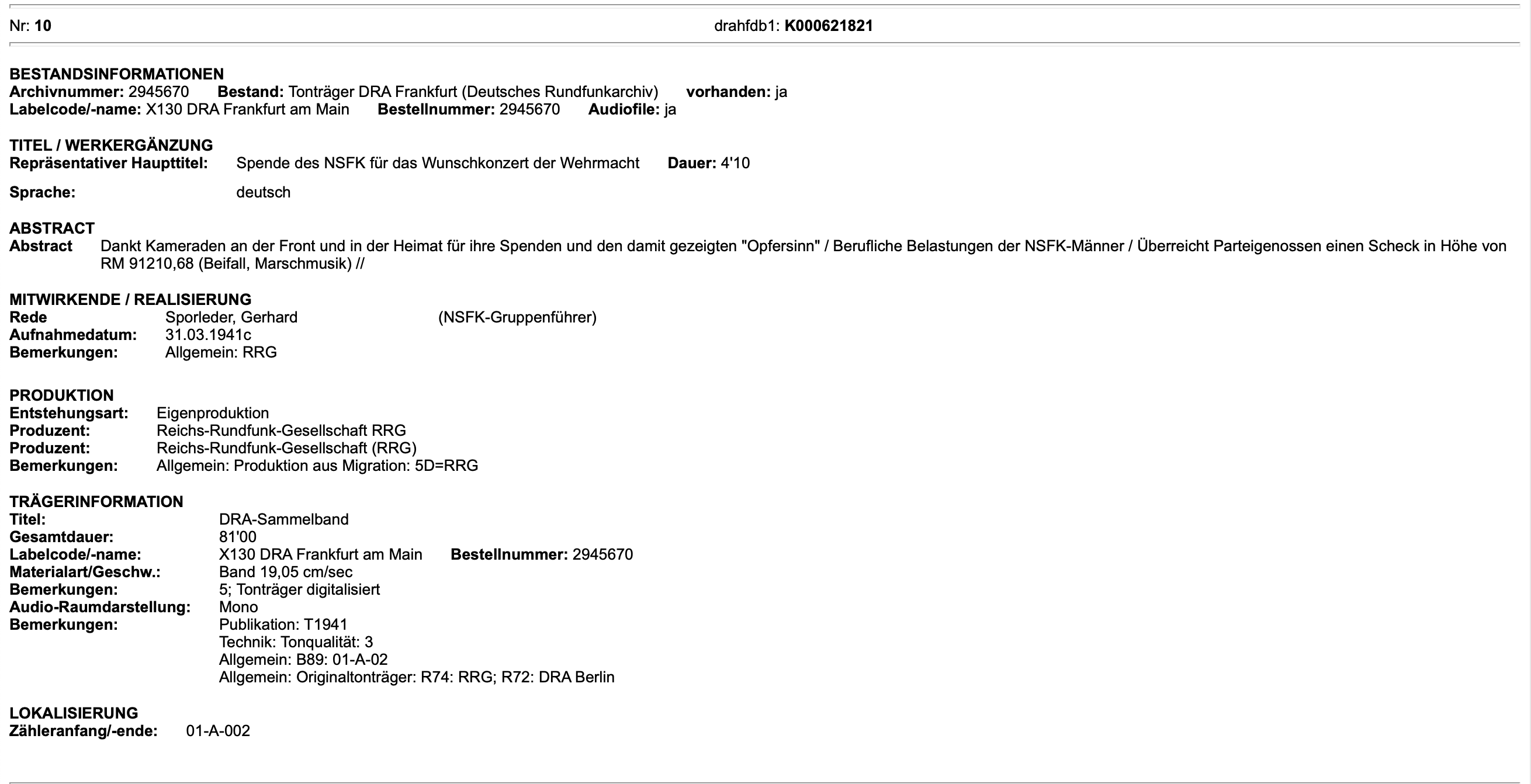
11.Philips156UBV_ChristmasSpeech

12.Philips156UBV_ChristmasSpeechGoebbels
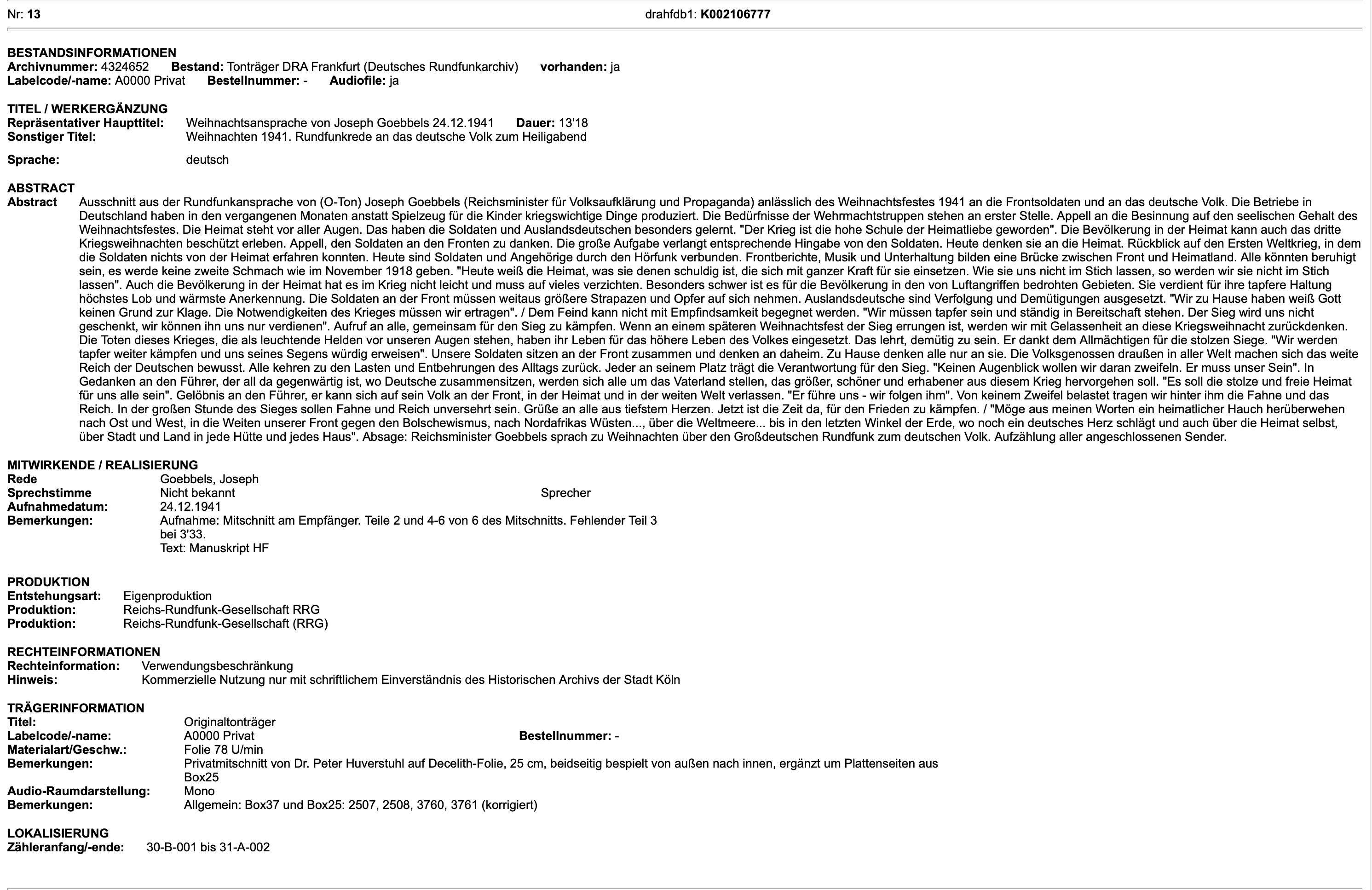
13.Philips156UBV_AnniversaryProgramme
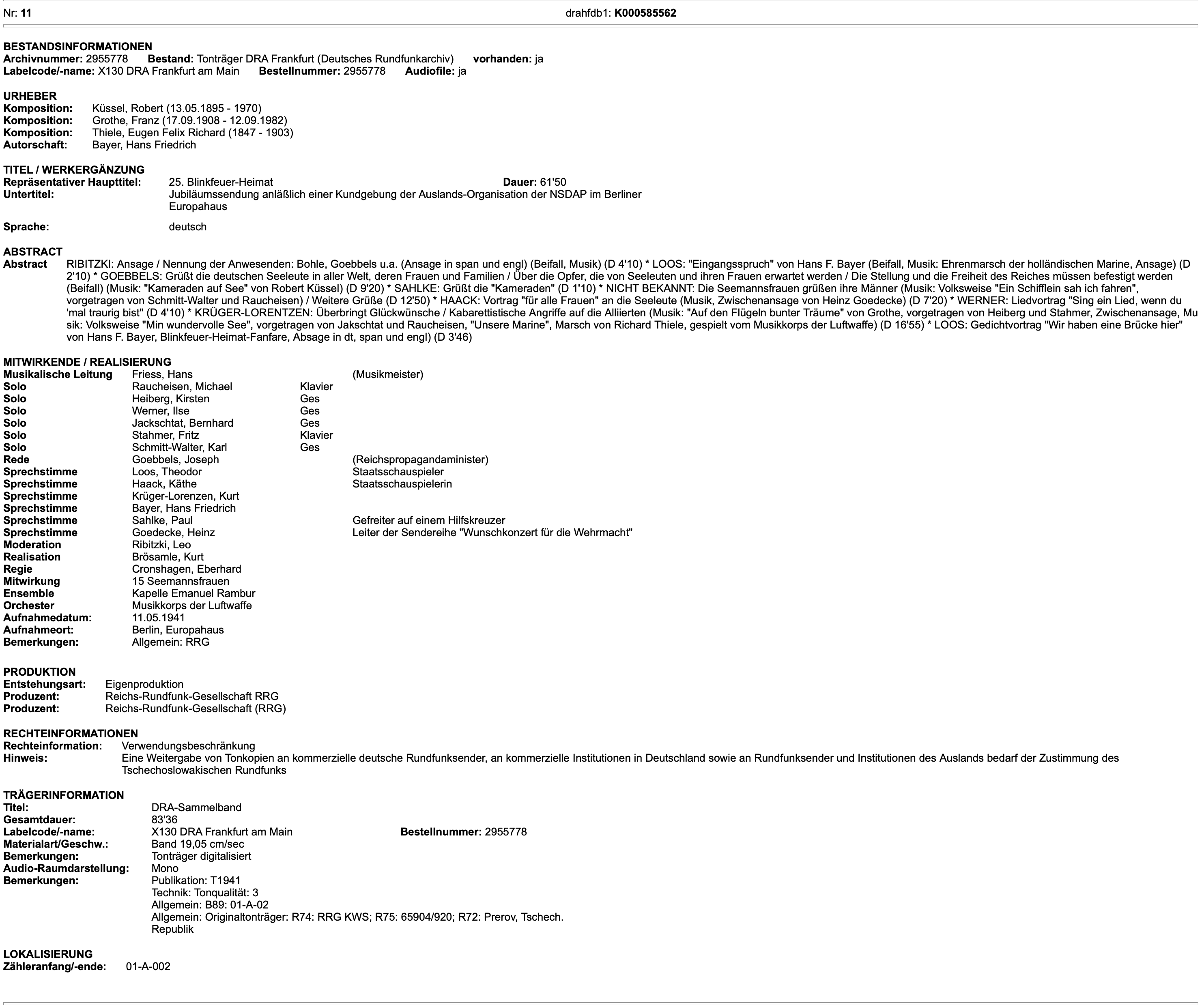
14.Philips156UBV_ChristmasGreetingsForSoldiers
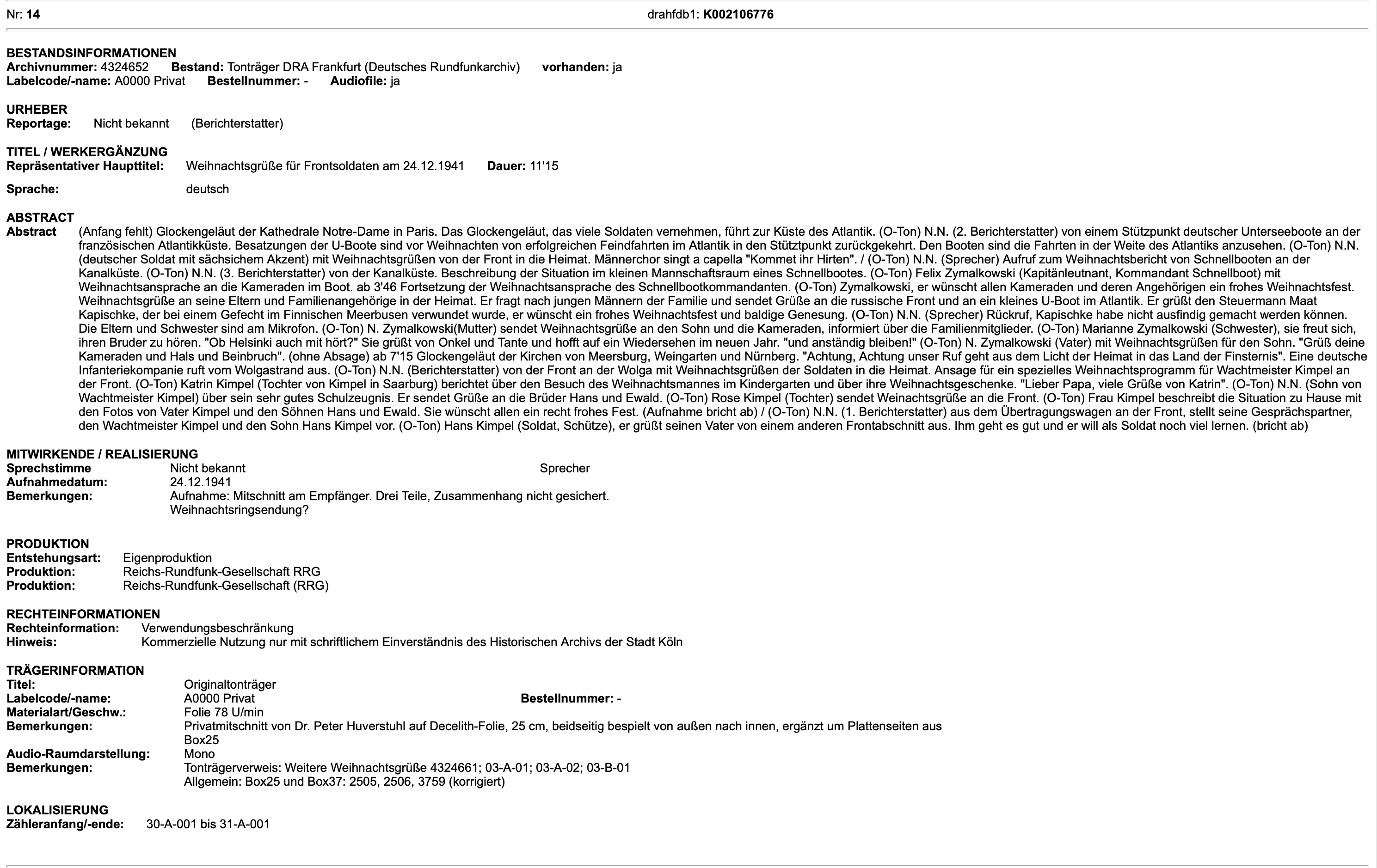
15.Philips156UBV_ProgrammeToConnectHomeAndFront
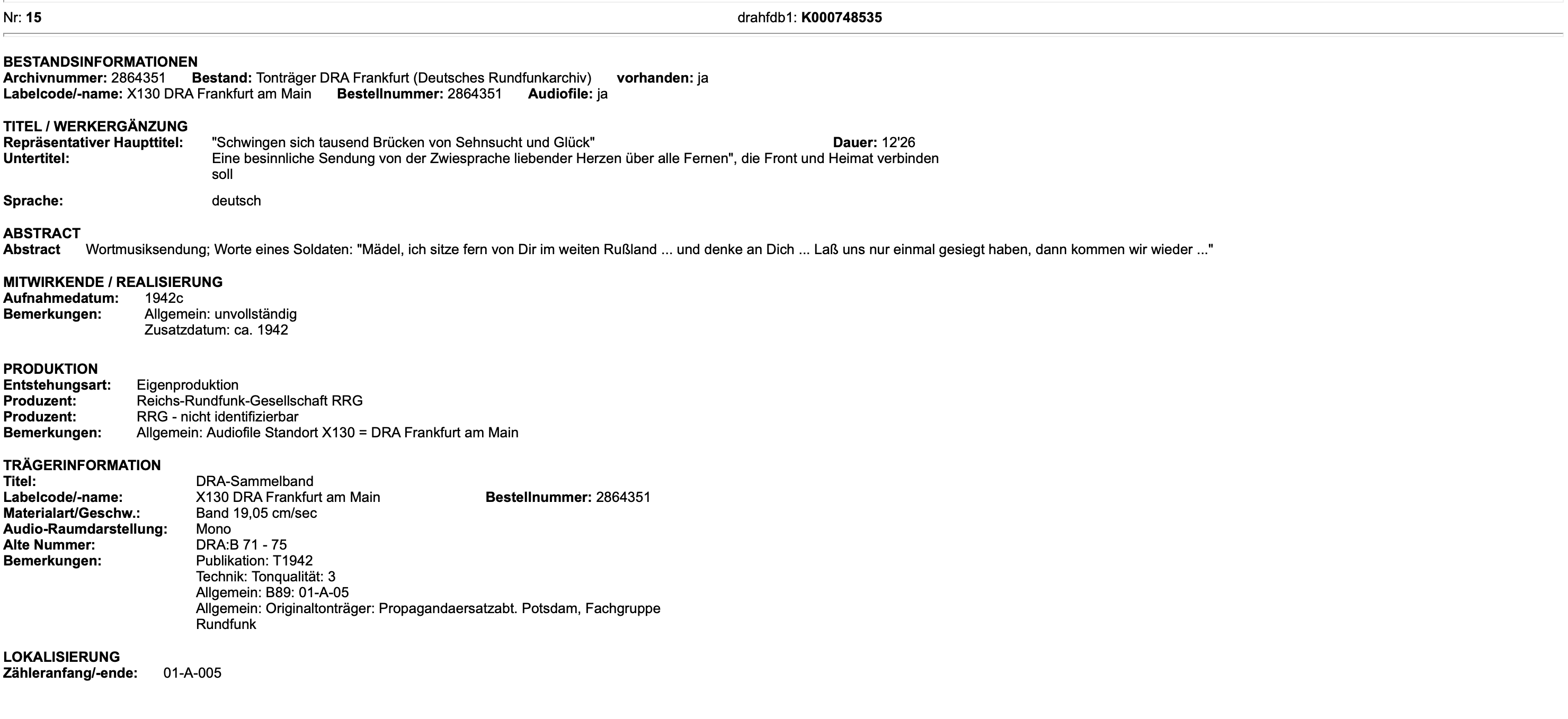
16.Philips156UBV_ProgrammeForFrontMoselLand
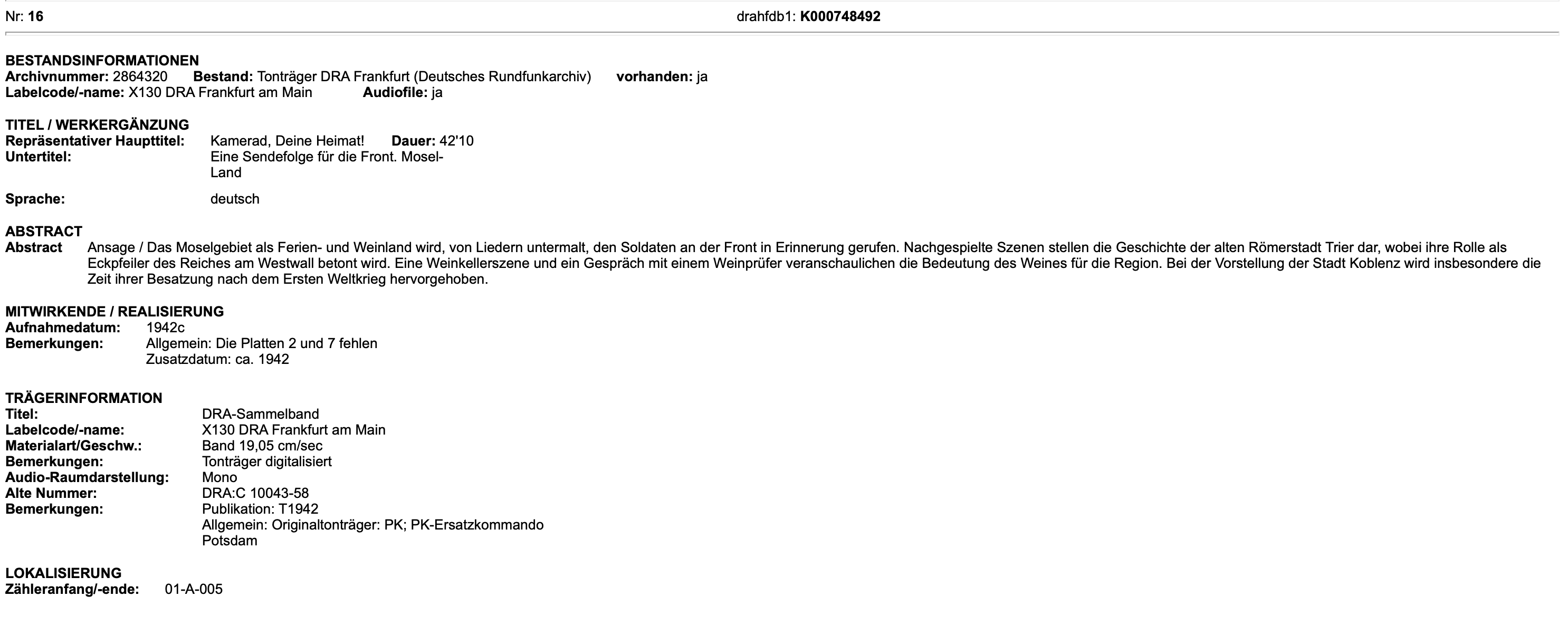
17.Philips156UBV_SketchForSoldiers

18.Philips156UBV_EntertainmentSoldier2
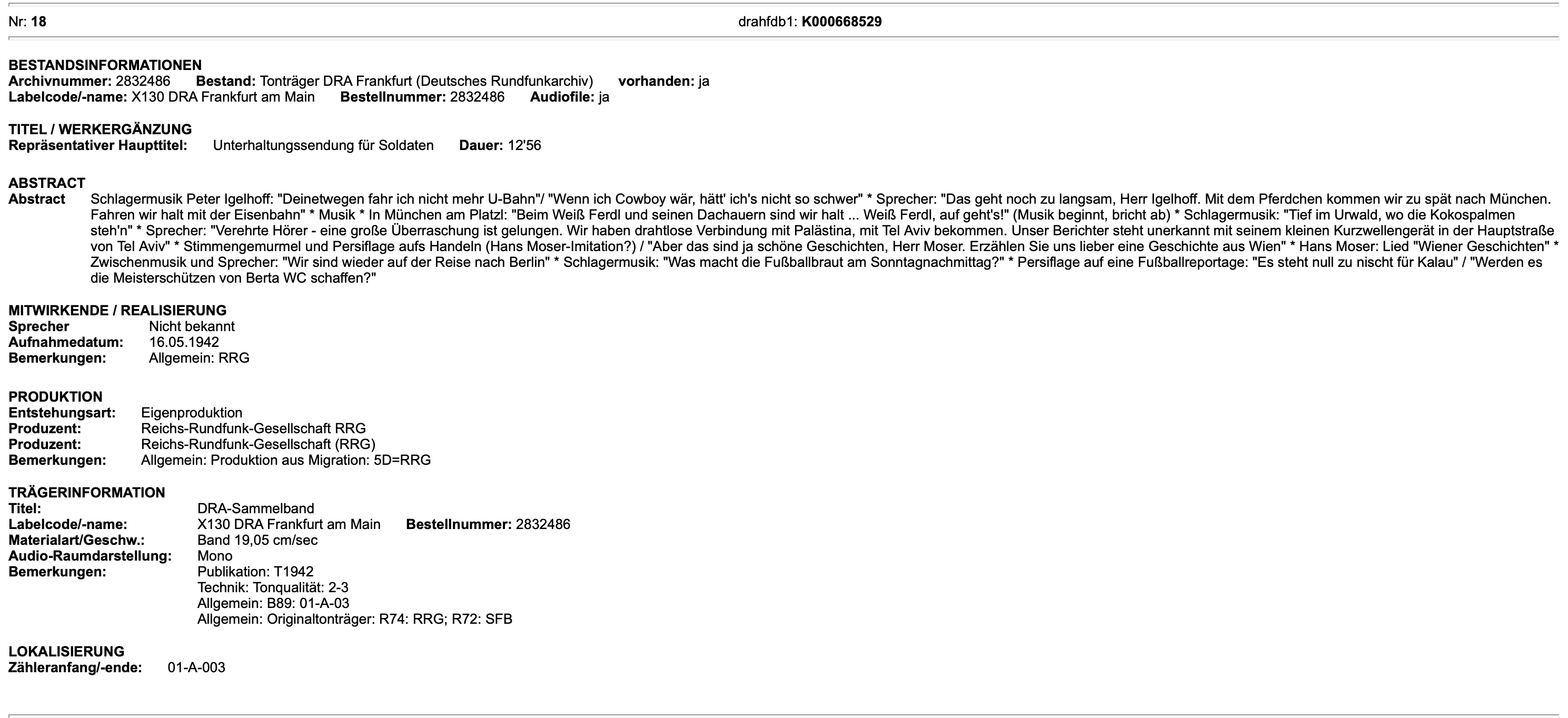
19.Philips156UBV_PK-ReportOnFronterholungsheim
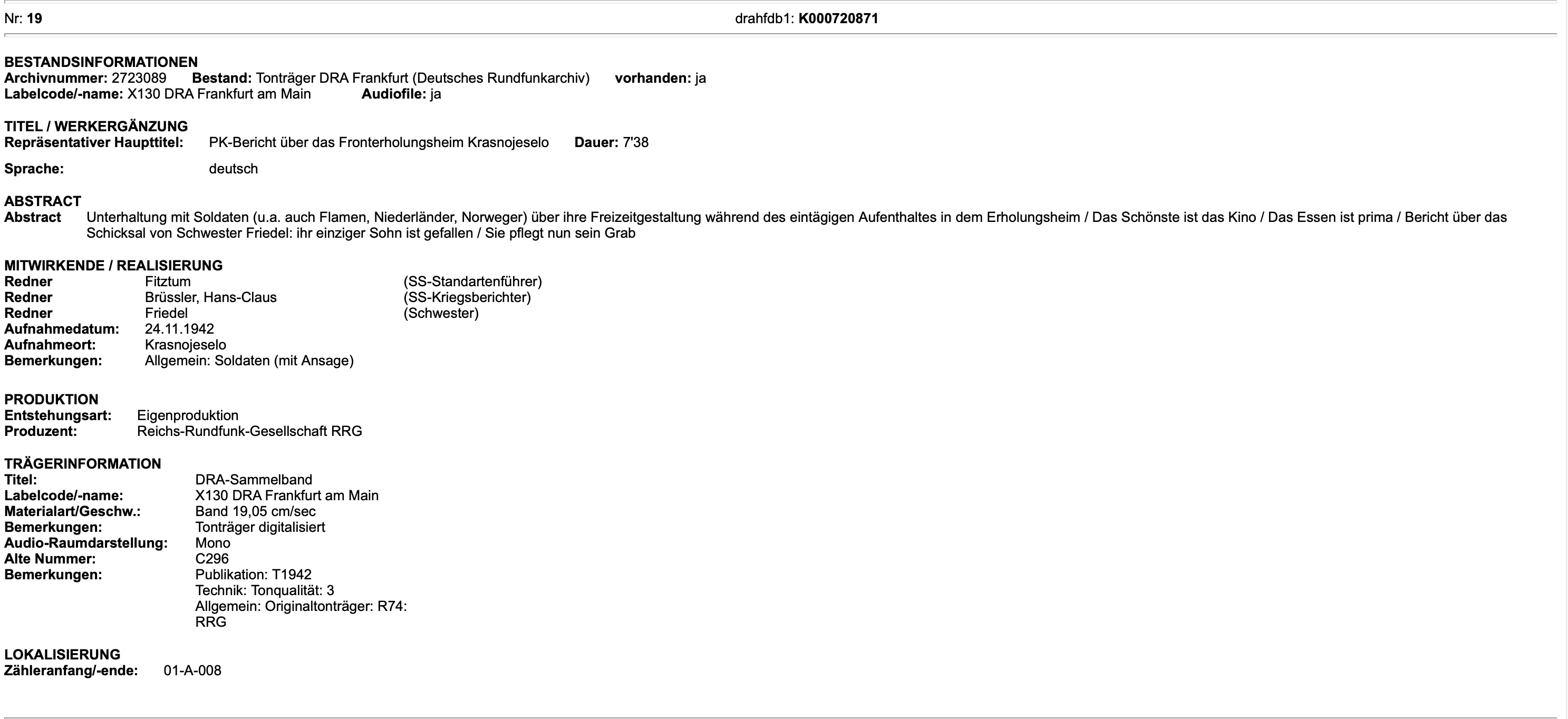
20.Philips156UBV_Weihnachtsringsendung

21.Philips156UBV_ComradeshipServiceGroßdeutscherRundfunk

22.Philips156UBV_PublicEventUkraine
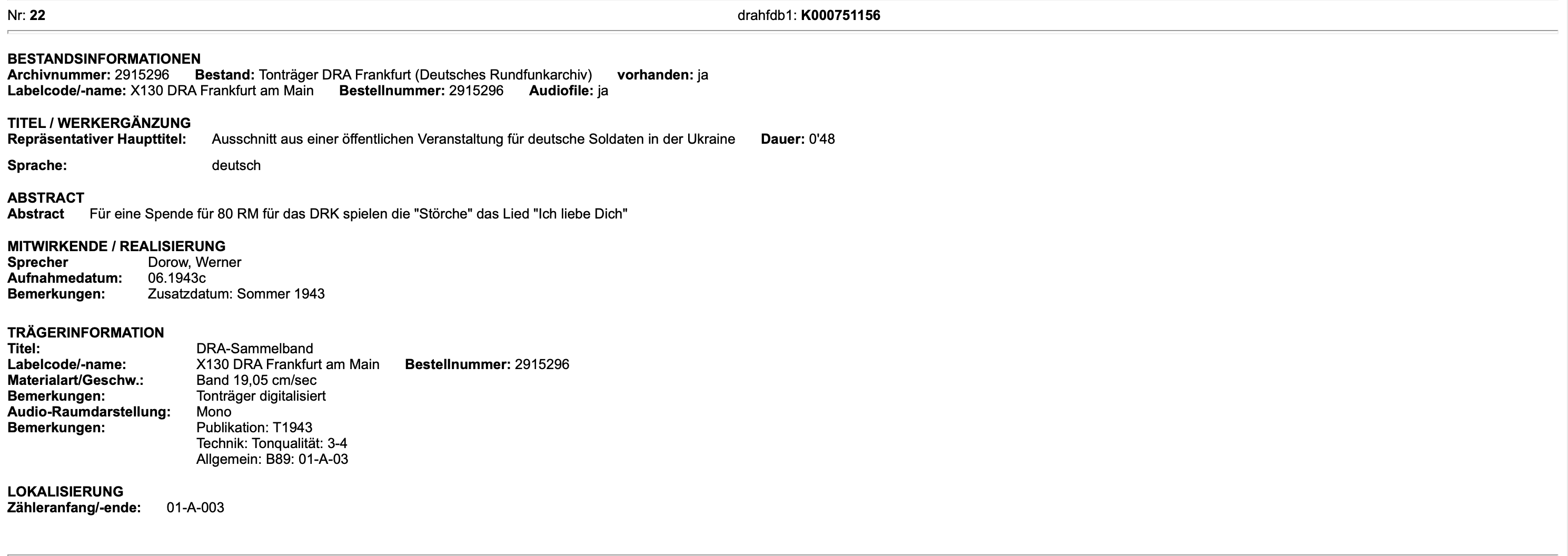
23.Philips156UBV_ChristmasProgramme

24.Philips156UBV_ExperienceInEducationalCentre
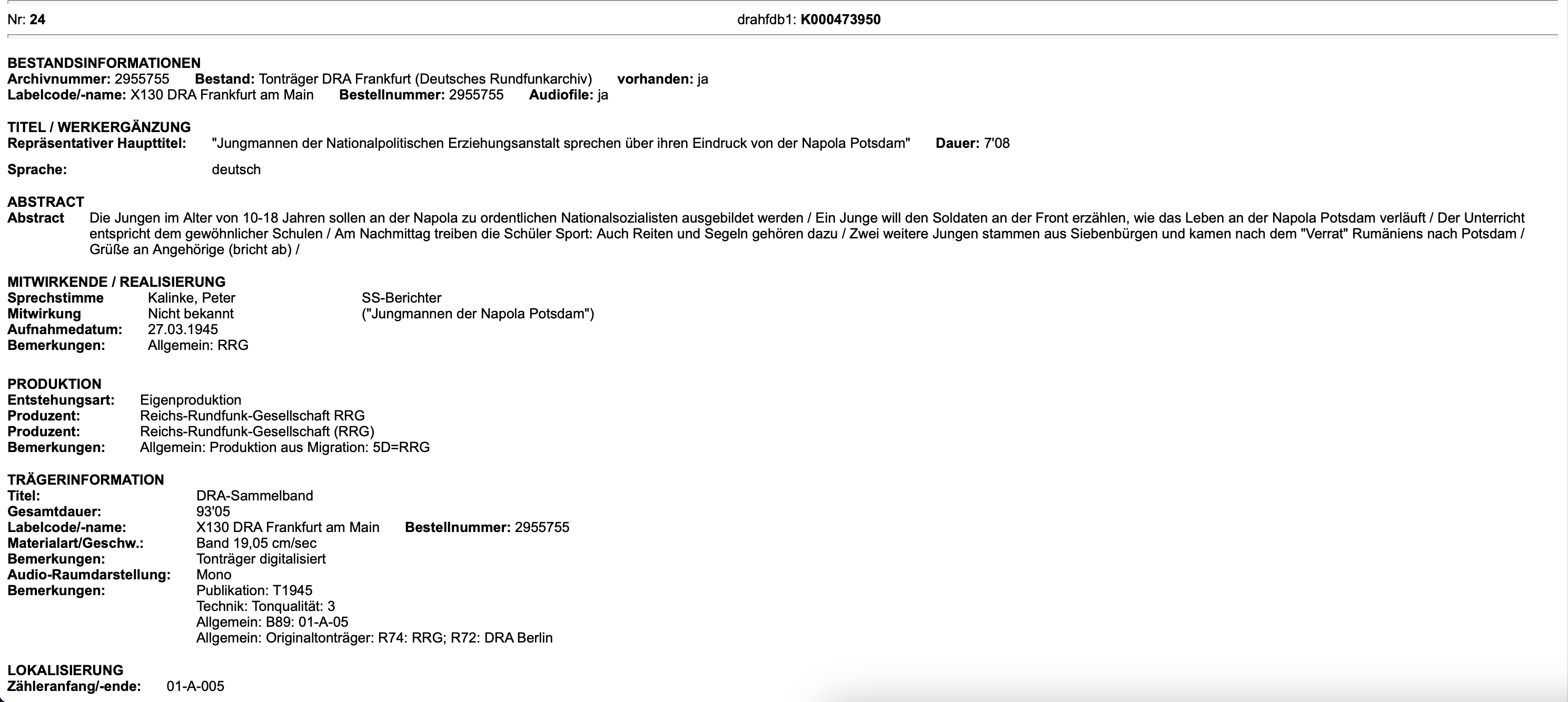
Online Audio Sources
-
‘Lale Andersen - Lili Marlene‘, Youtube.com, Link.
-
‘Amerikanischer Soldatensender 1212 (1)‘, archive.org, Link.
-
‘Amerikanischer Soldatensender 1212 (2)‘, archive.org, Link.
-
‘Last Wehrmacht Report‘, Youtube.com, Link.
-
‘Third Reich Broadcasting Jingle‘, Youtube.com, Link.
-
‘Soldatensender Belgrad (1)‘, archive.org, Link.
-
‘Soldatensender Belgrad (2)‘, Youtube.com, Link.
-
‘Amerikanischer Soldatensender 1212 (3)‘, swr.de, Link.
-
‘Wehrmacht Songs and Marches‘, archive.org, Link.
-
‘Weihnachtsringsendung 1942‘, Youtube.com, Link.
-
‘Wunschkonzert für die Wehrmacht‘, archive.org, Link.
Contemporary Pictures
36.Philips156UBV_Soldiers at the front
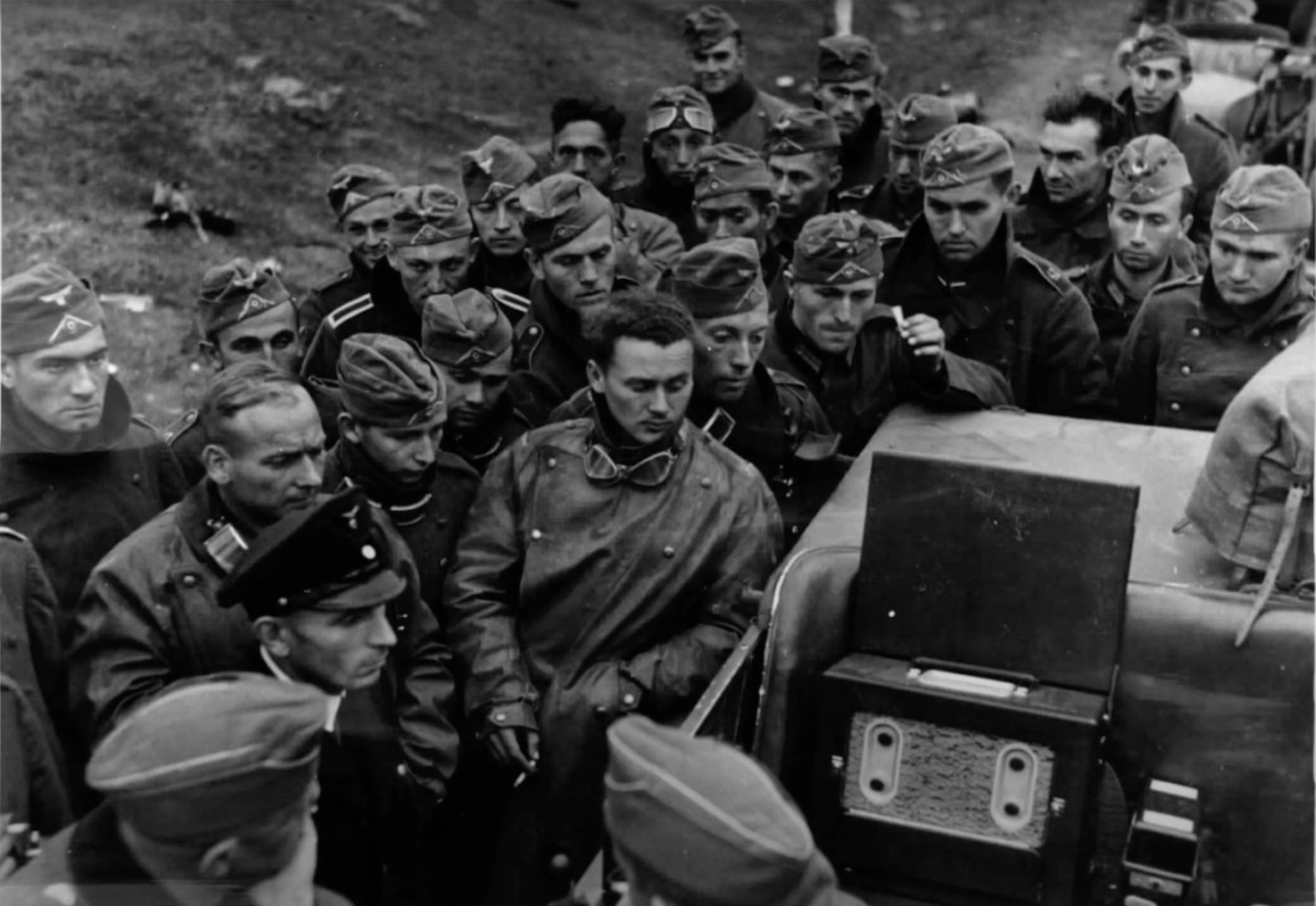
37.Philips156UBV_Wunschkonzert Flyer
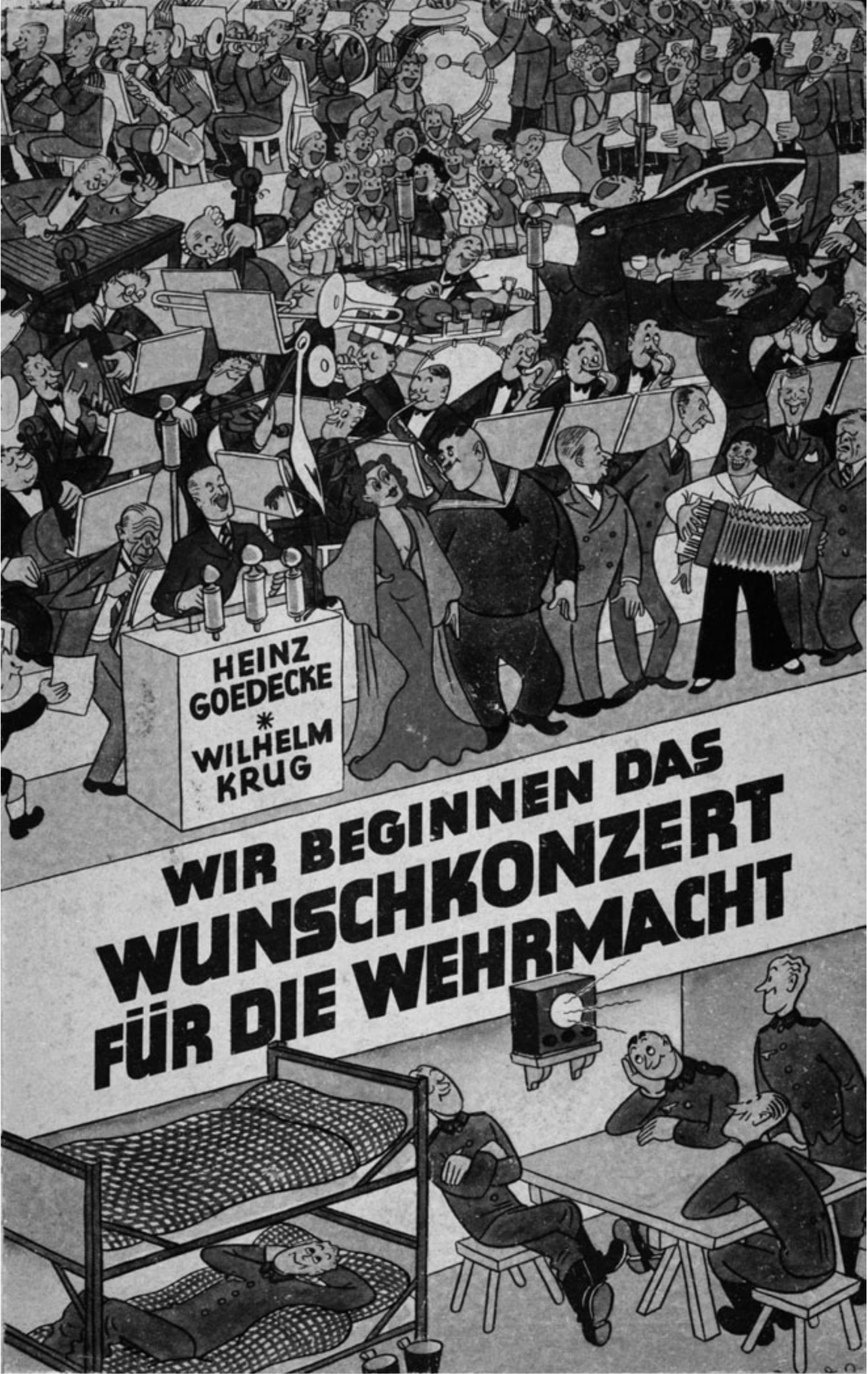
38.Philips156UBV_SoldatensenderBelgrad
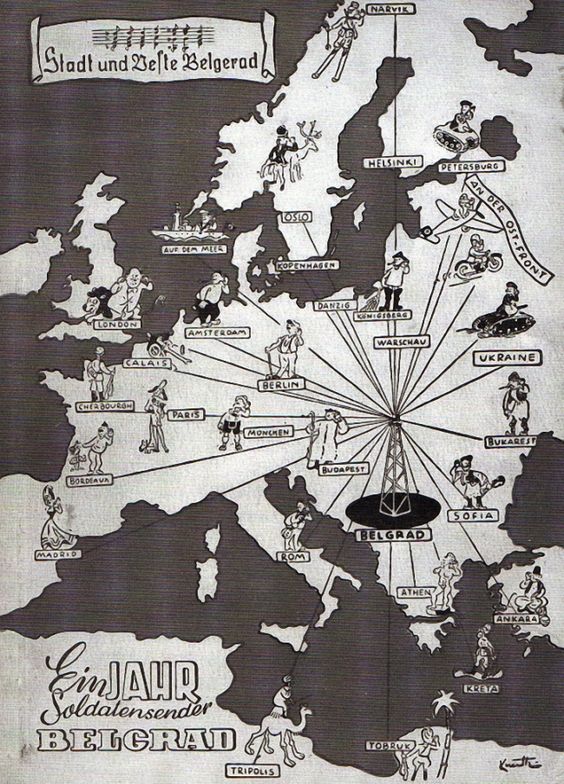
57.Philips156UBV_MailPictureAndTexts_DeutschesRundfunkArchiv (There are no pictures in the Deutsches Rundfunkarchiv)

Pictures of the old version of the radio:
39.Philips156UBVOld1
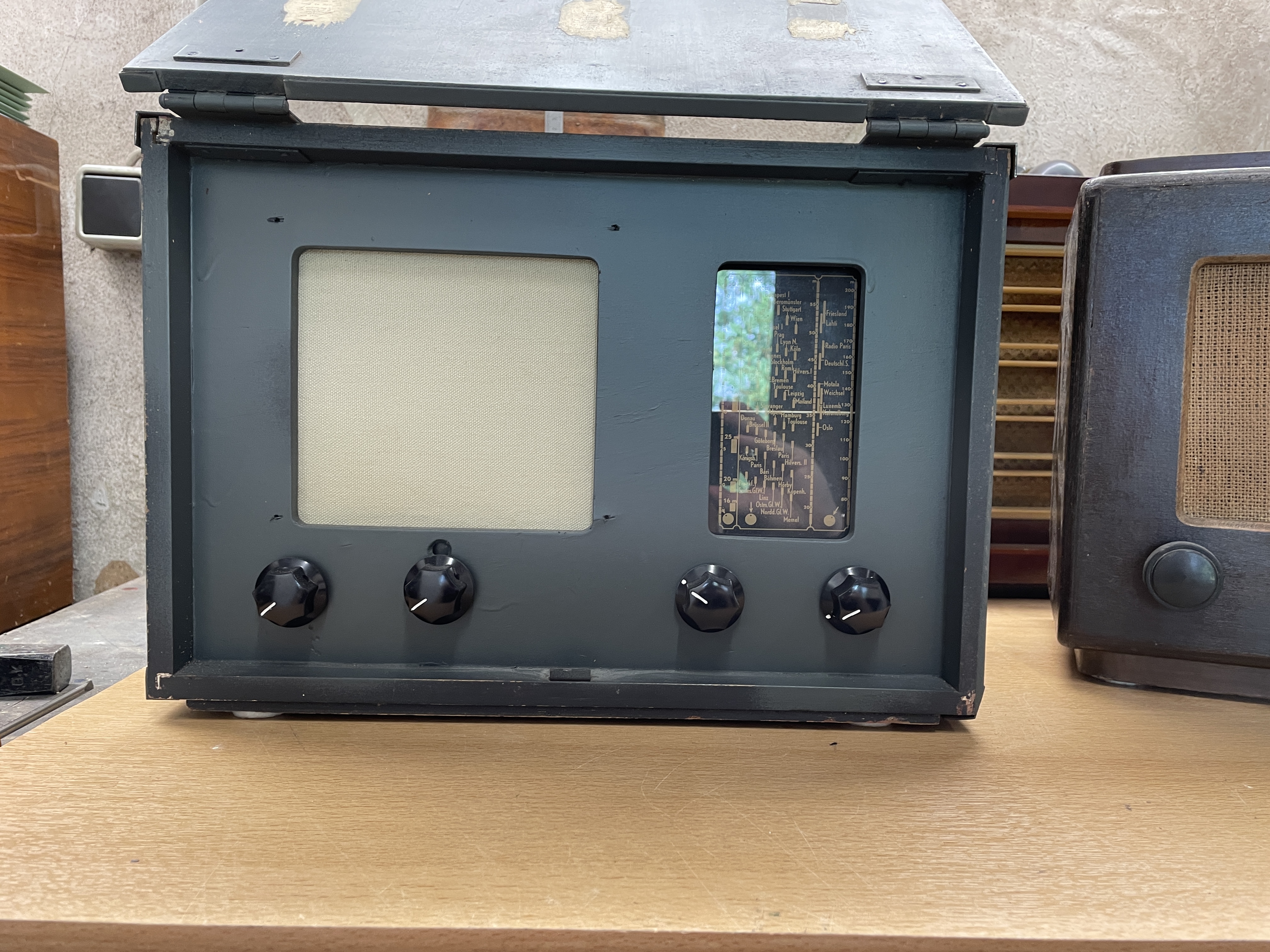
40.Philips156UBVOld2
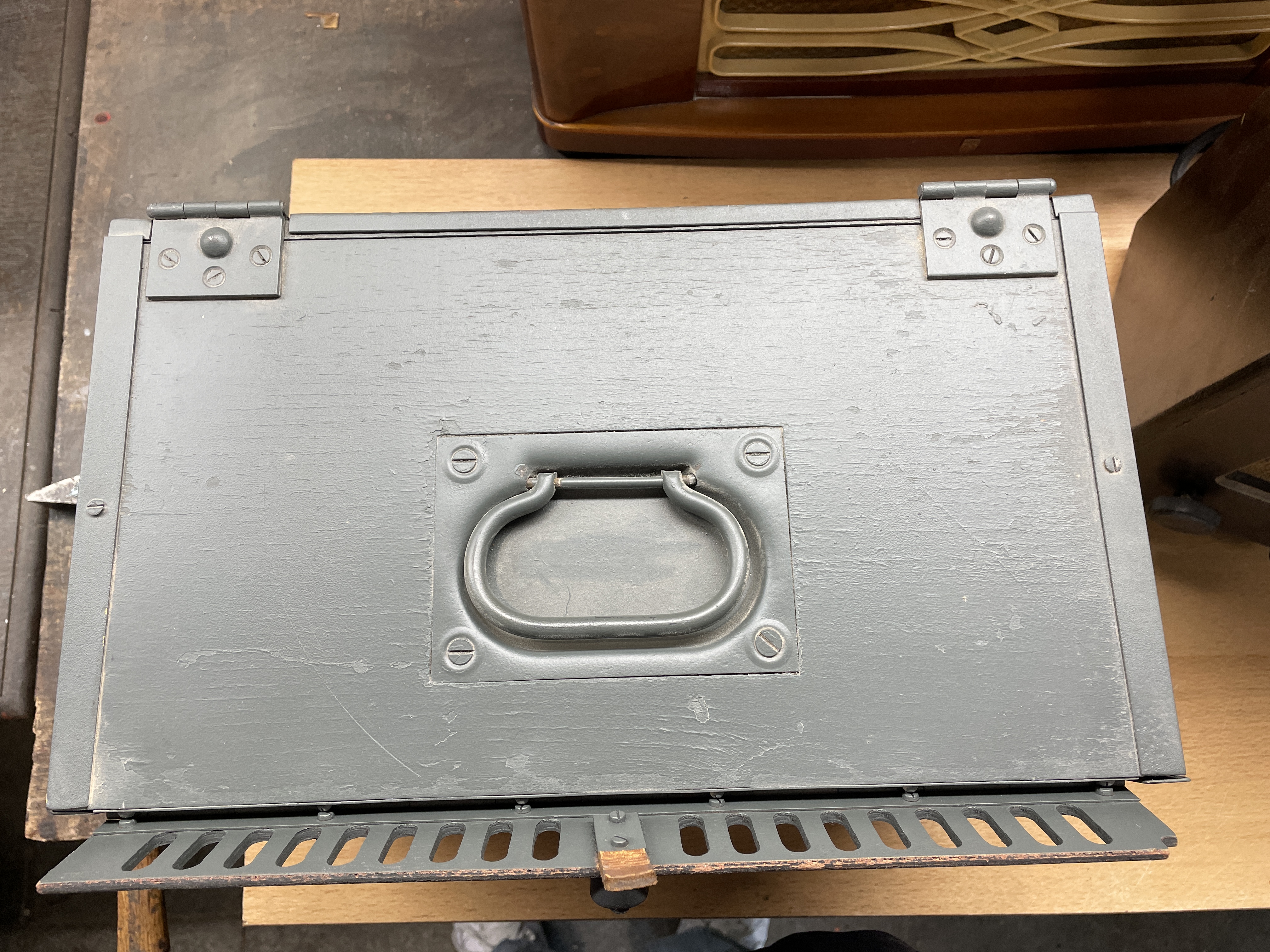
41.Philips156UBVOld3
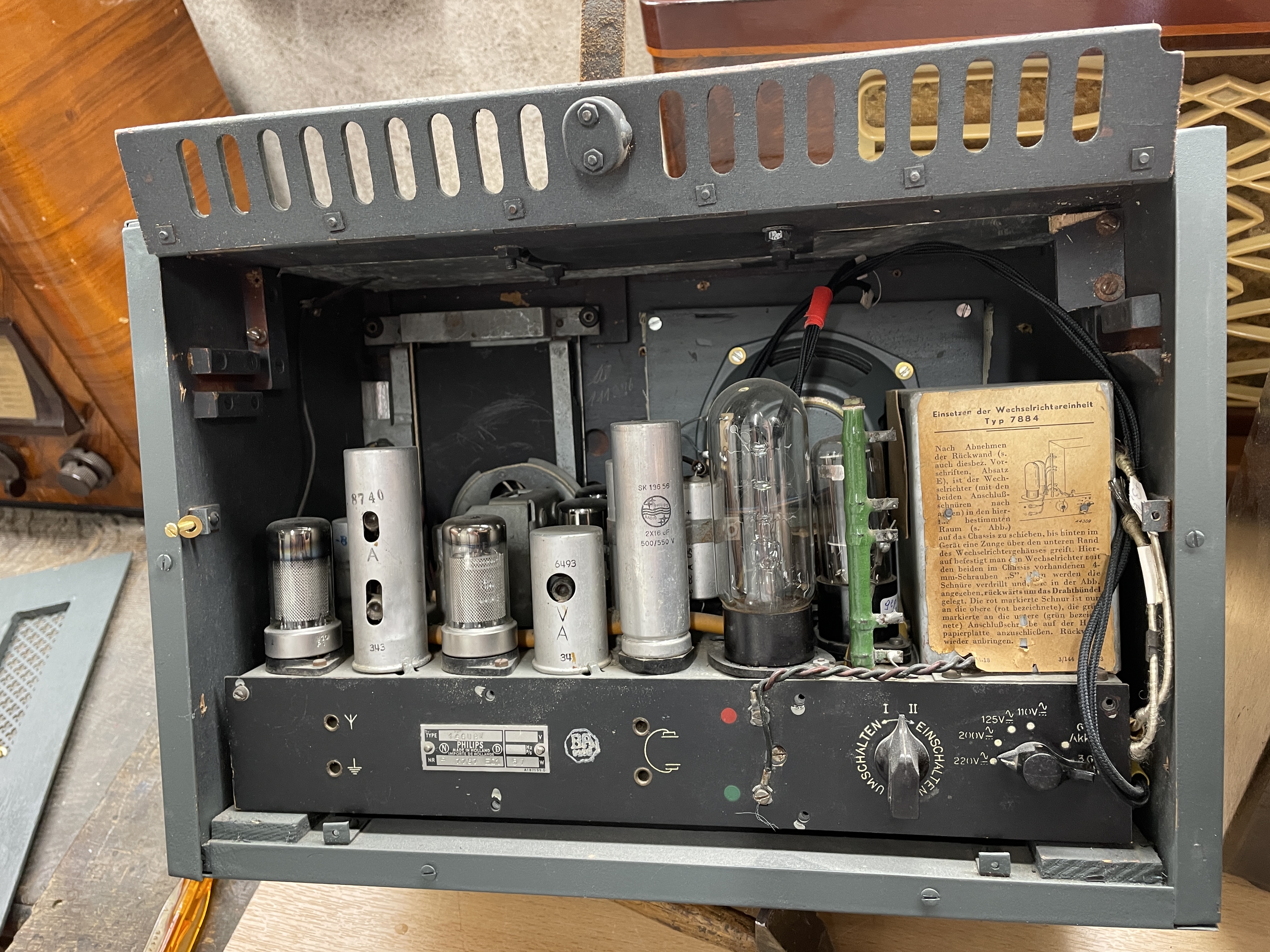
42.Philips156UBVOld4
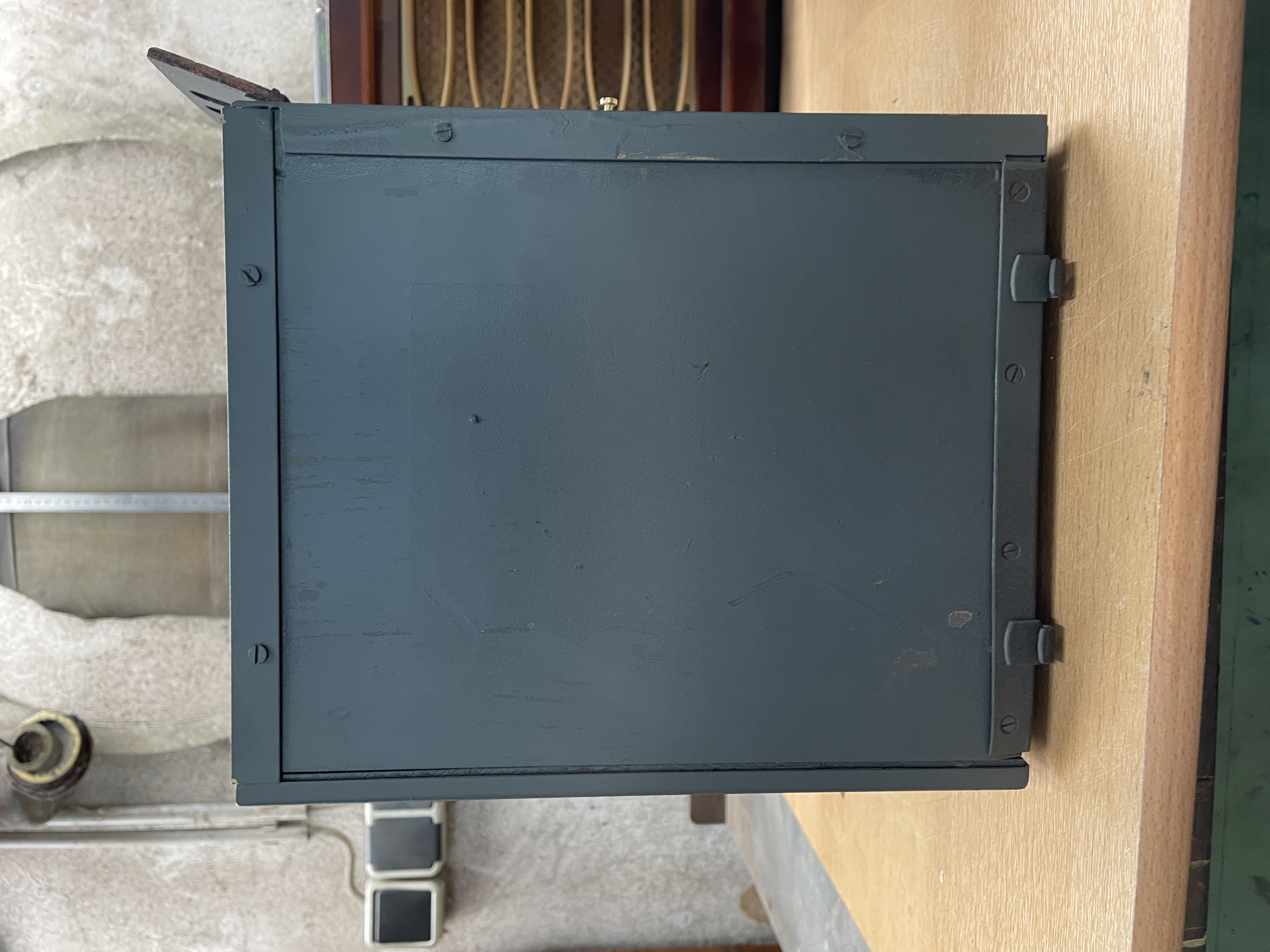
43.Philips156UBVOld5
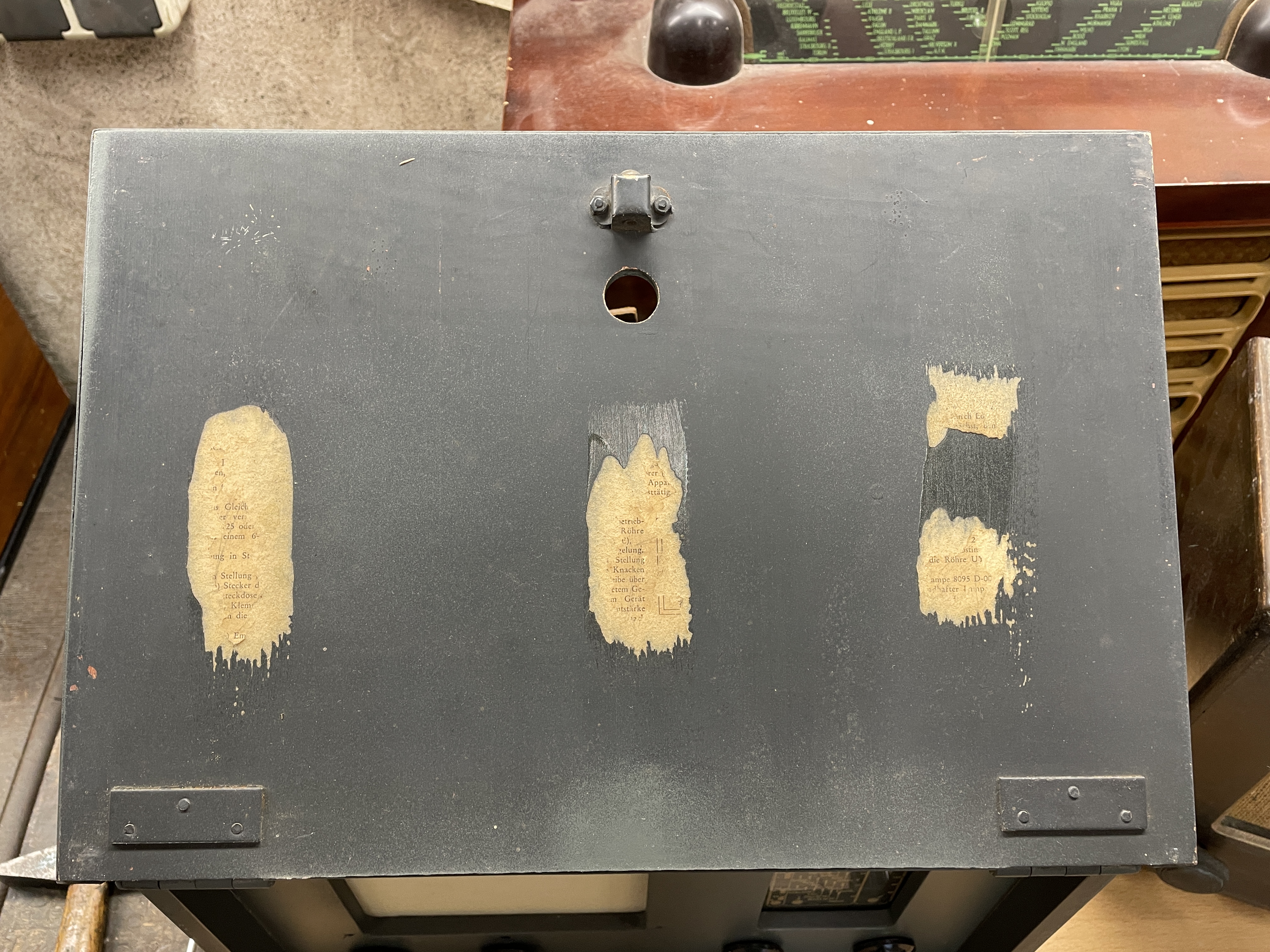
44.Philips156UBVOld6
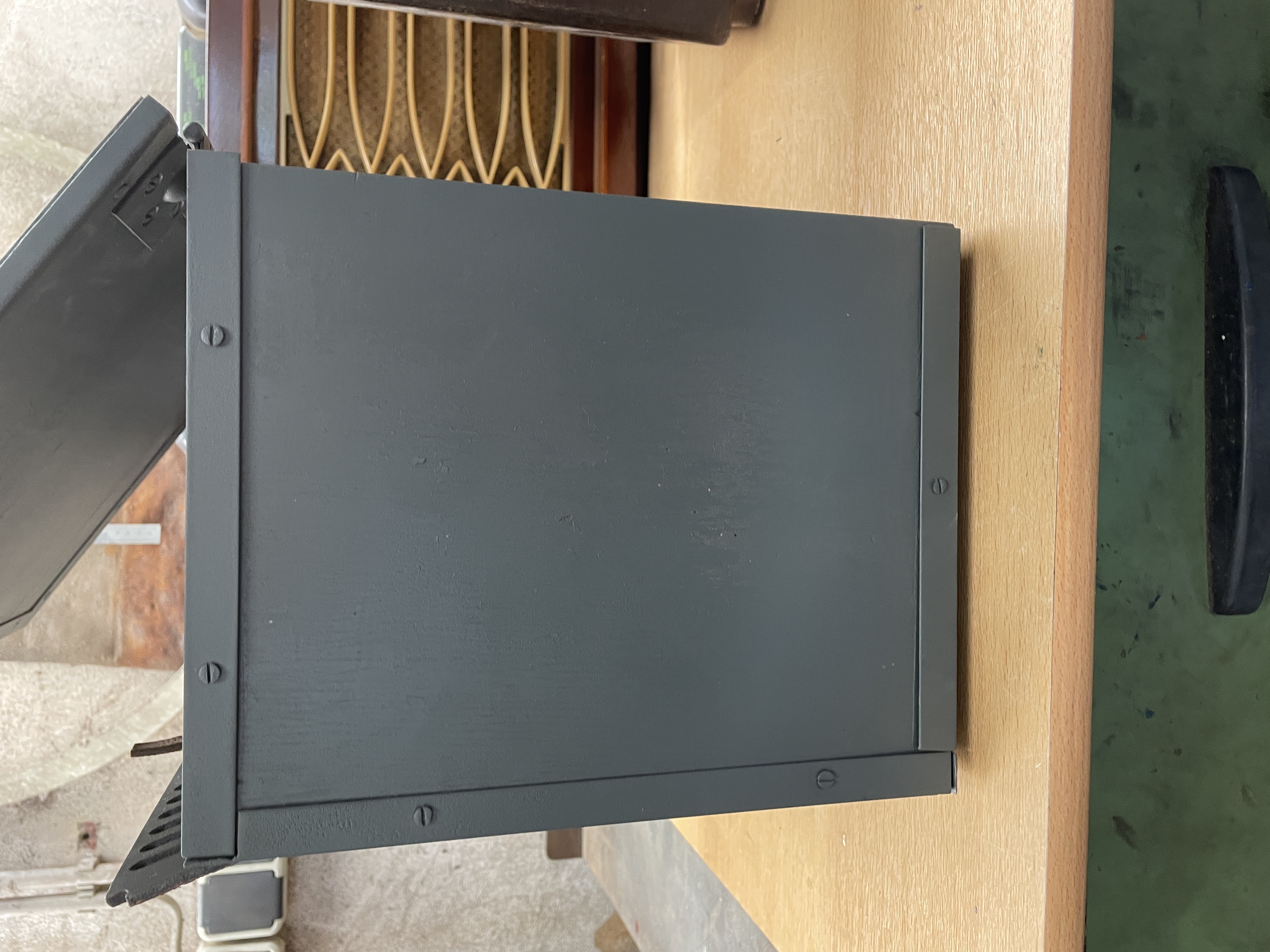
45.Philips156UBVOld7
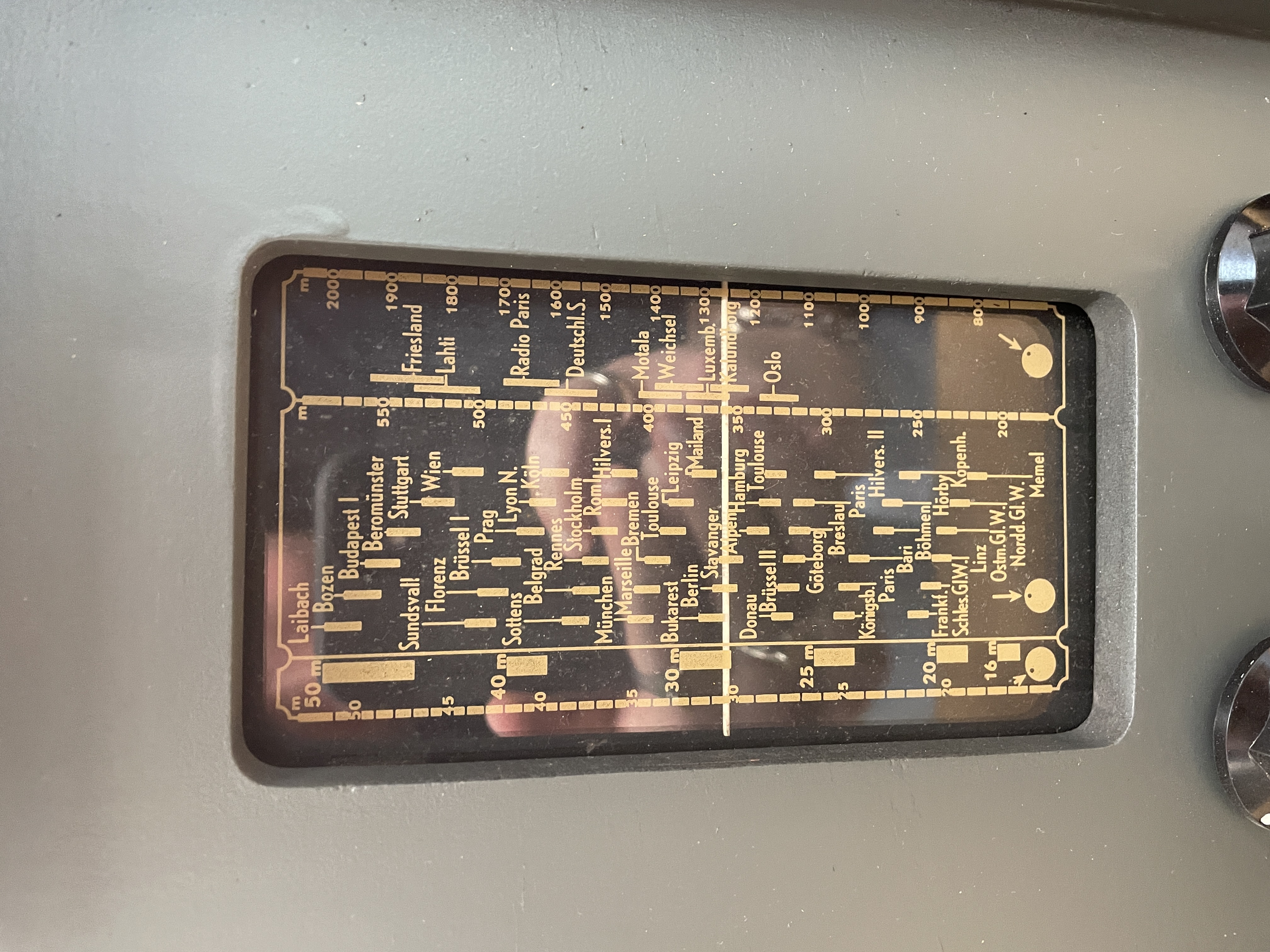
46.Philips156UBVOld8

Pictures of the new version of the radio:
47.Philips156UBVNew1
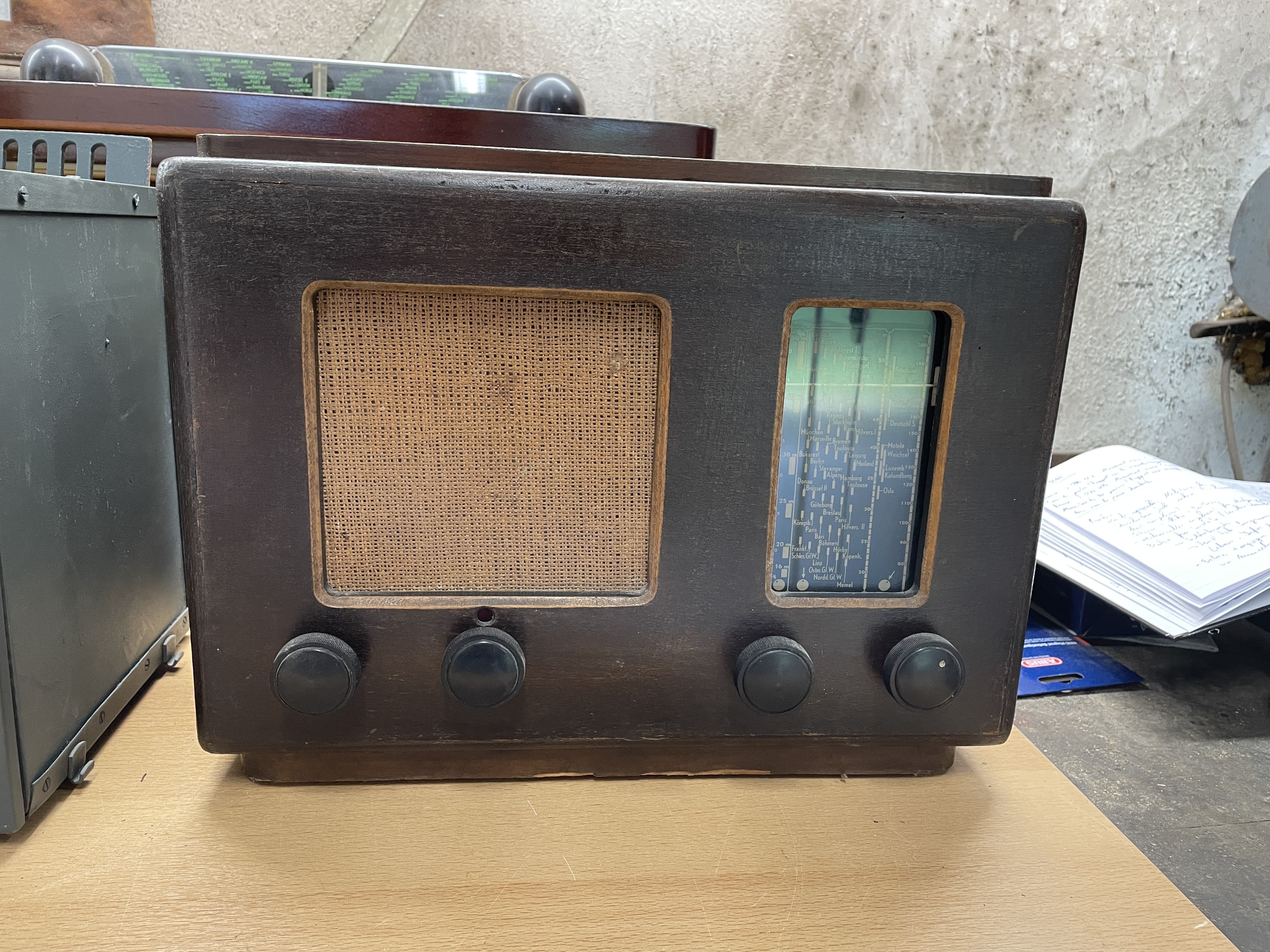
48.Philips156UBVNew2
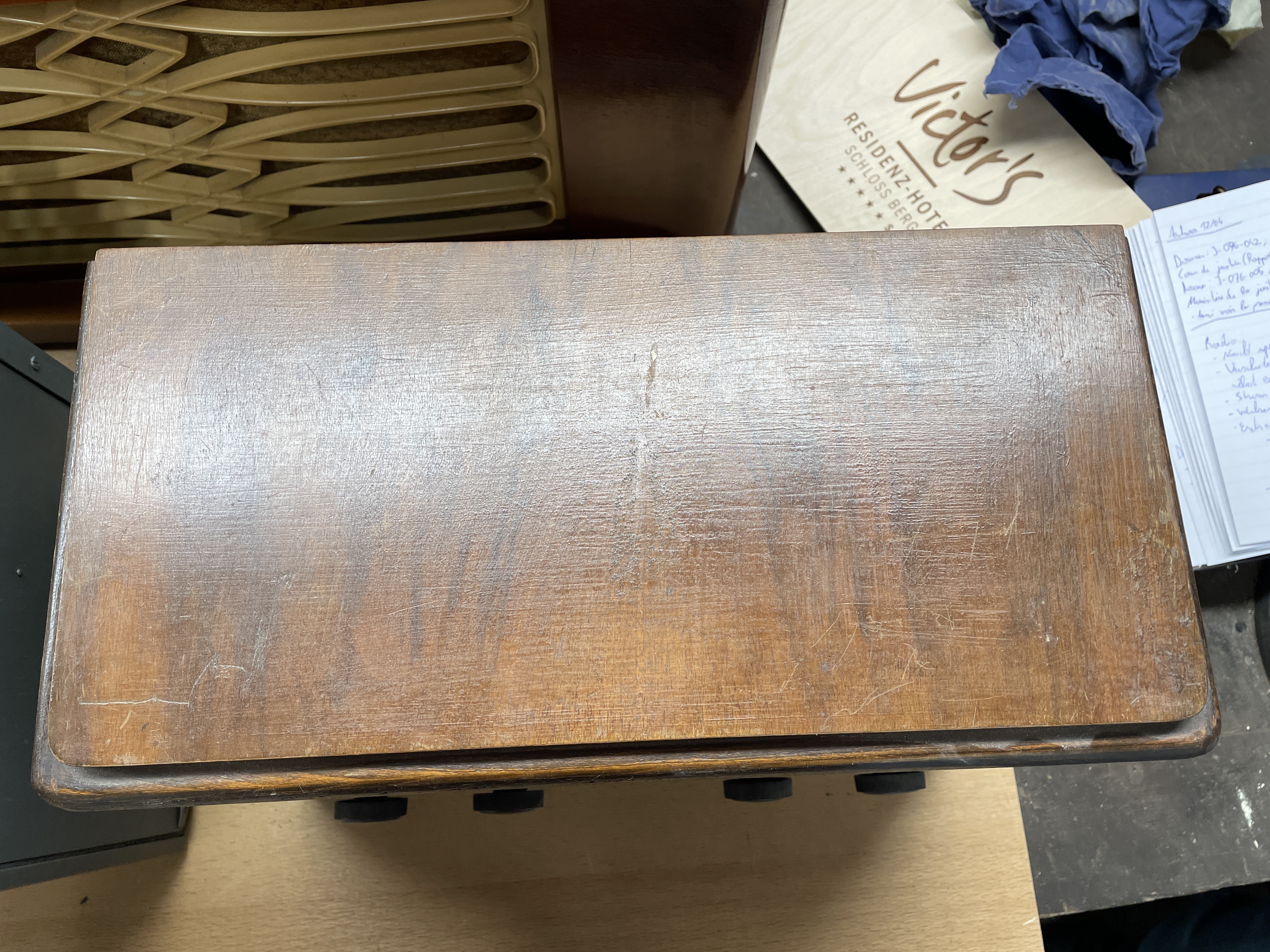
49.Philips156UBVNew3
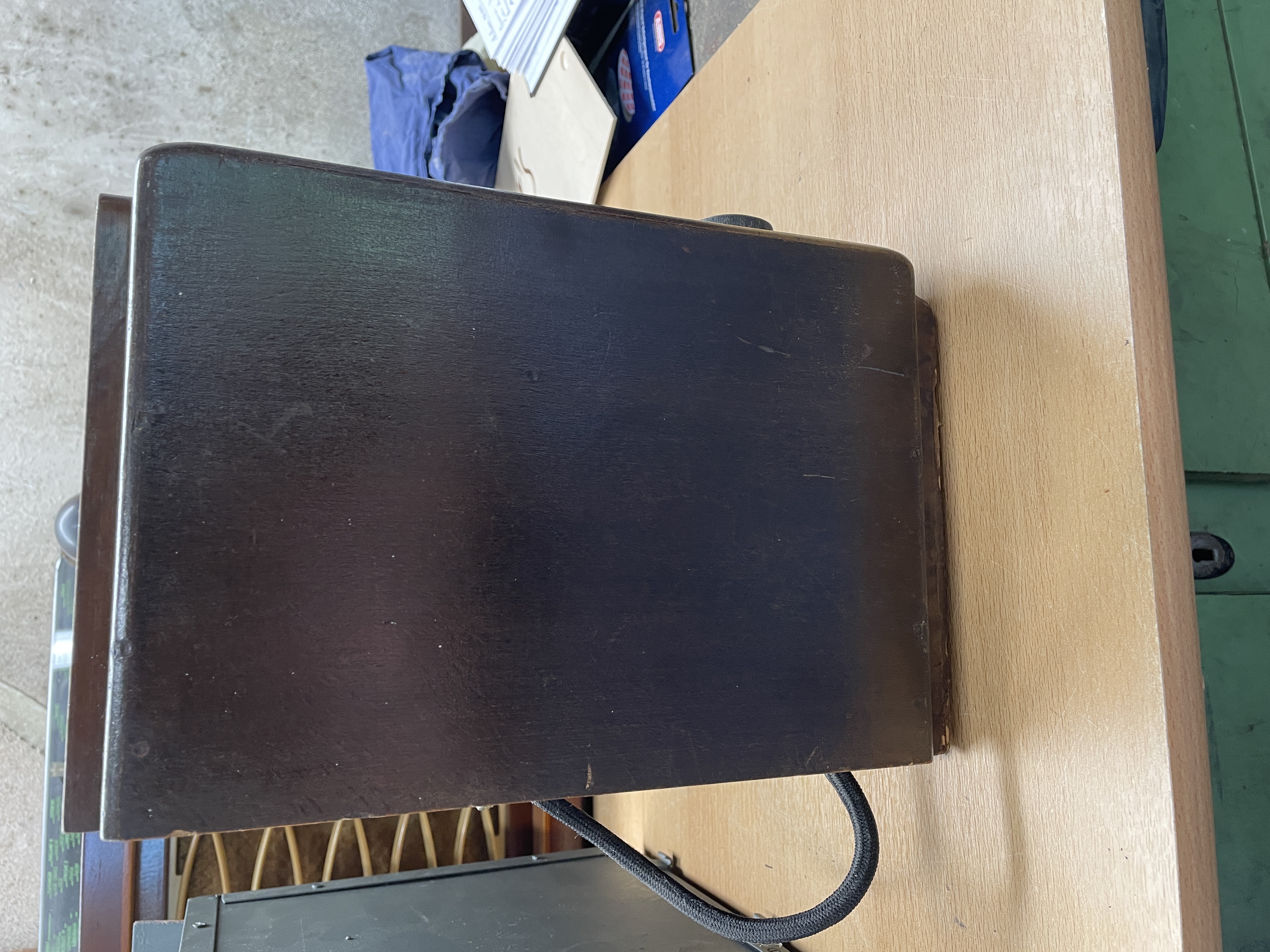
50.Philips156UBVNew4
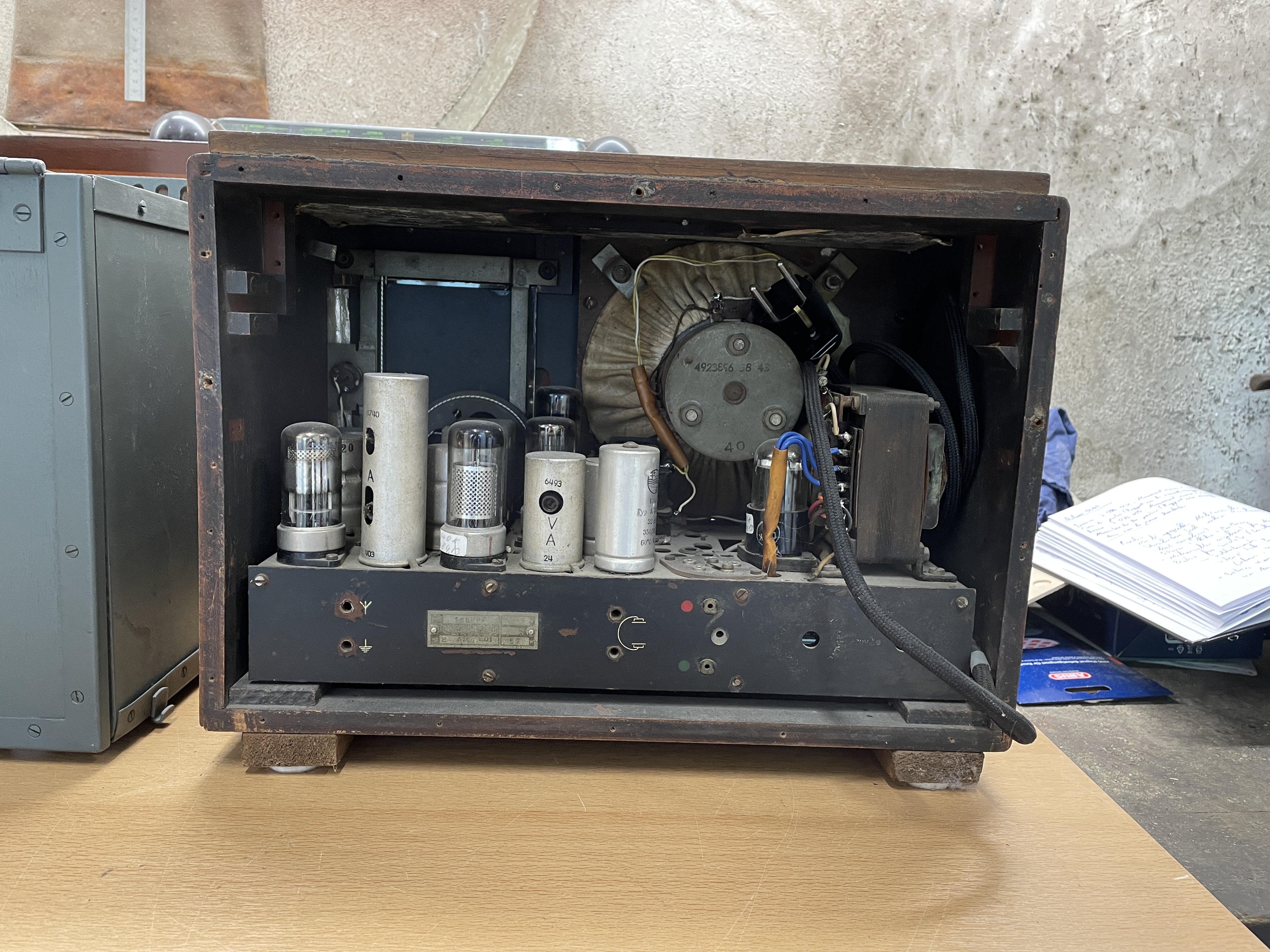
51.Philips156UBVNew5
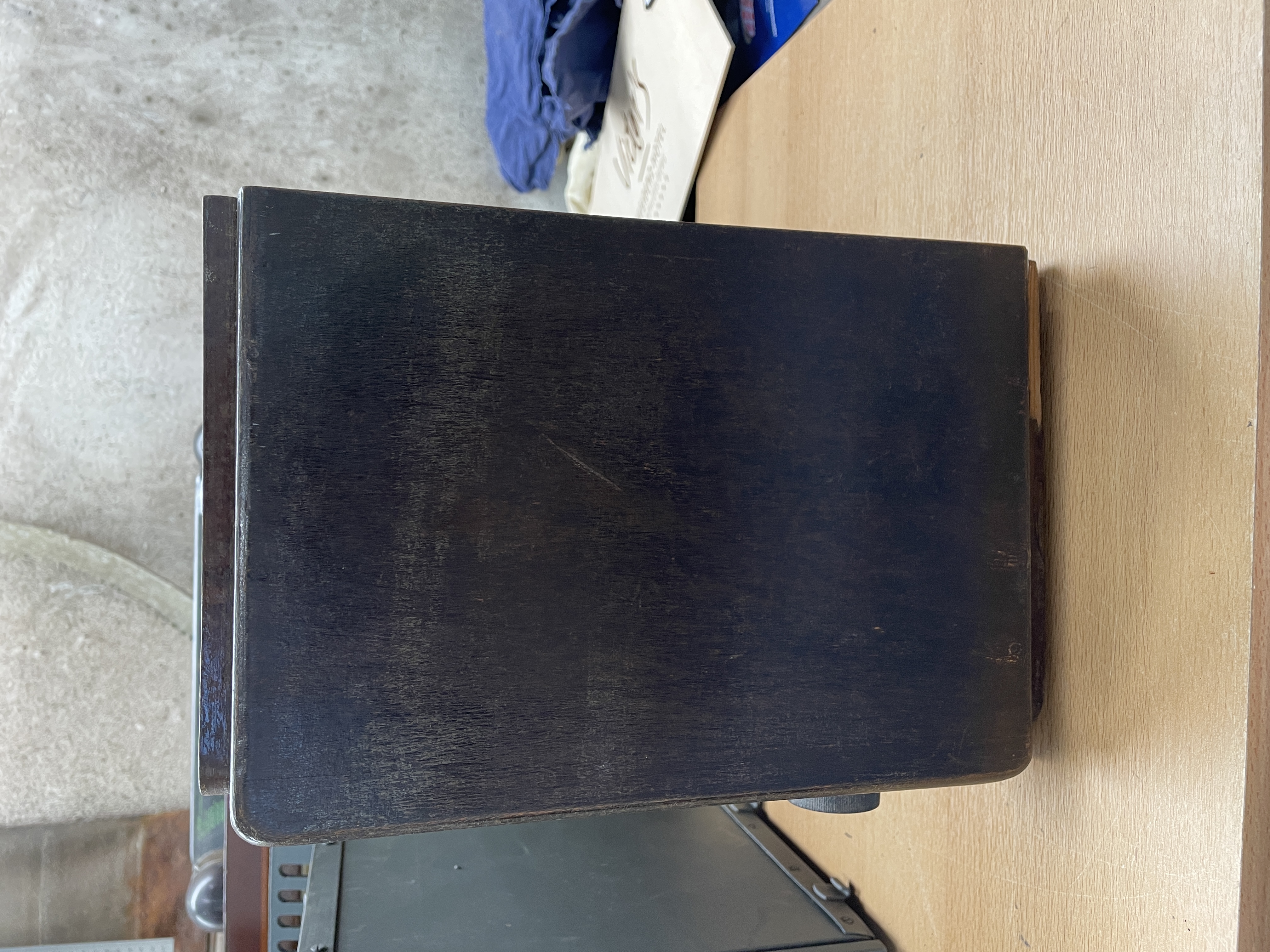
52.Philips156UBVNew6
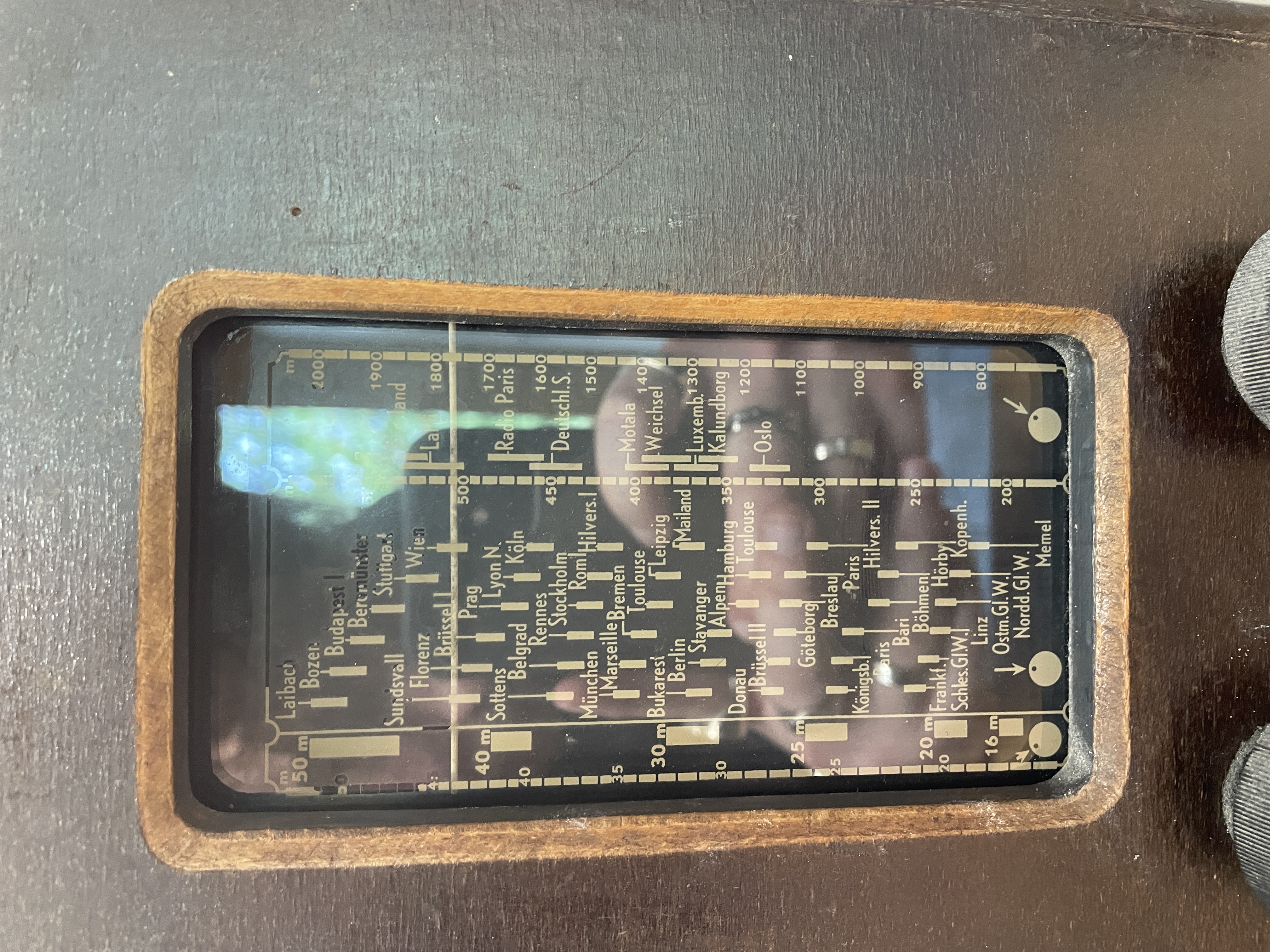
53.Philips156UBVNew7
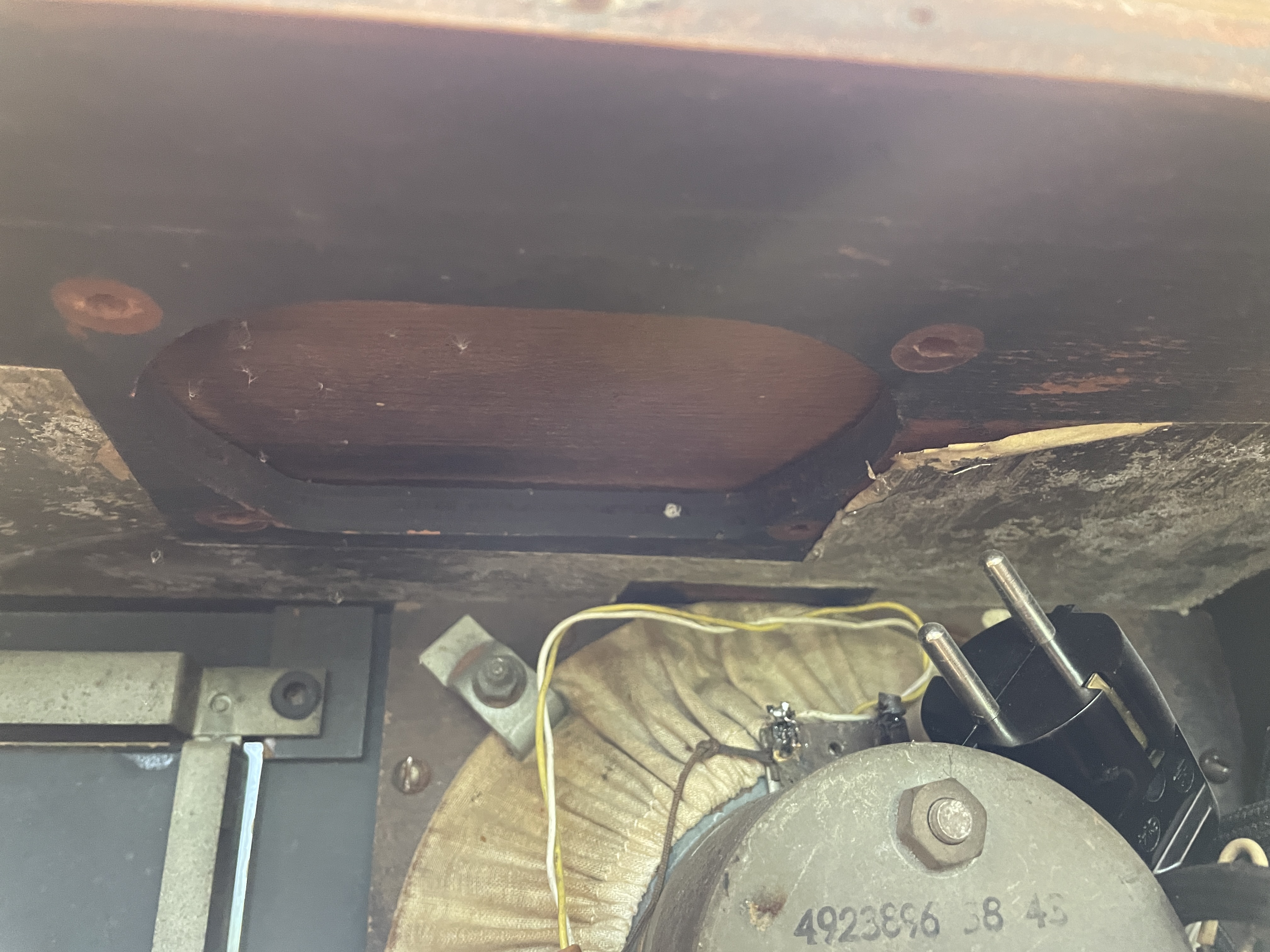
Documents of the Philips 156 UBV:
54.Philips156UBV_Documents (Whole PDF on Atlas)
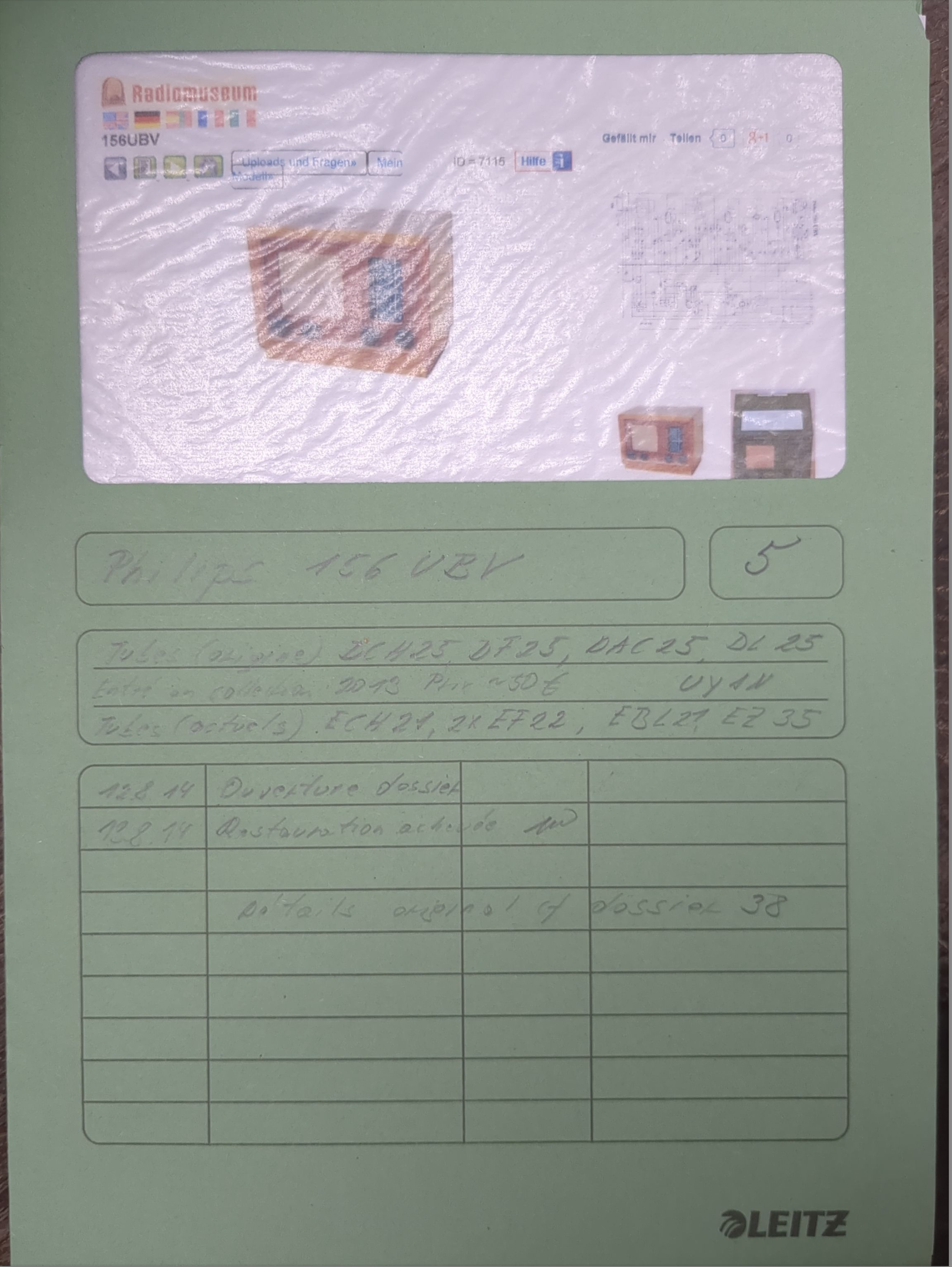
Contemporary Articles:
55.Philips156UBV_Die Weihnachtsringsendung - eine Großleistung von Organisation und Technik (Whole PDF on Atlas)
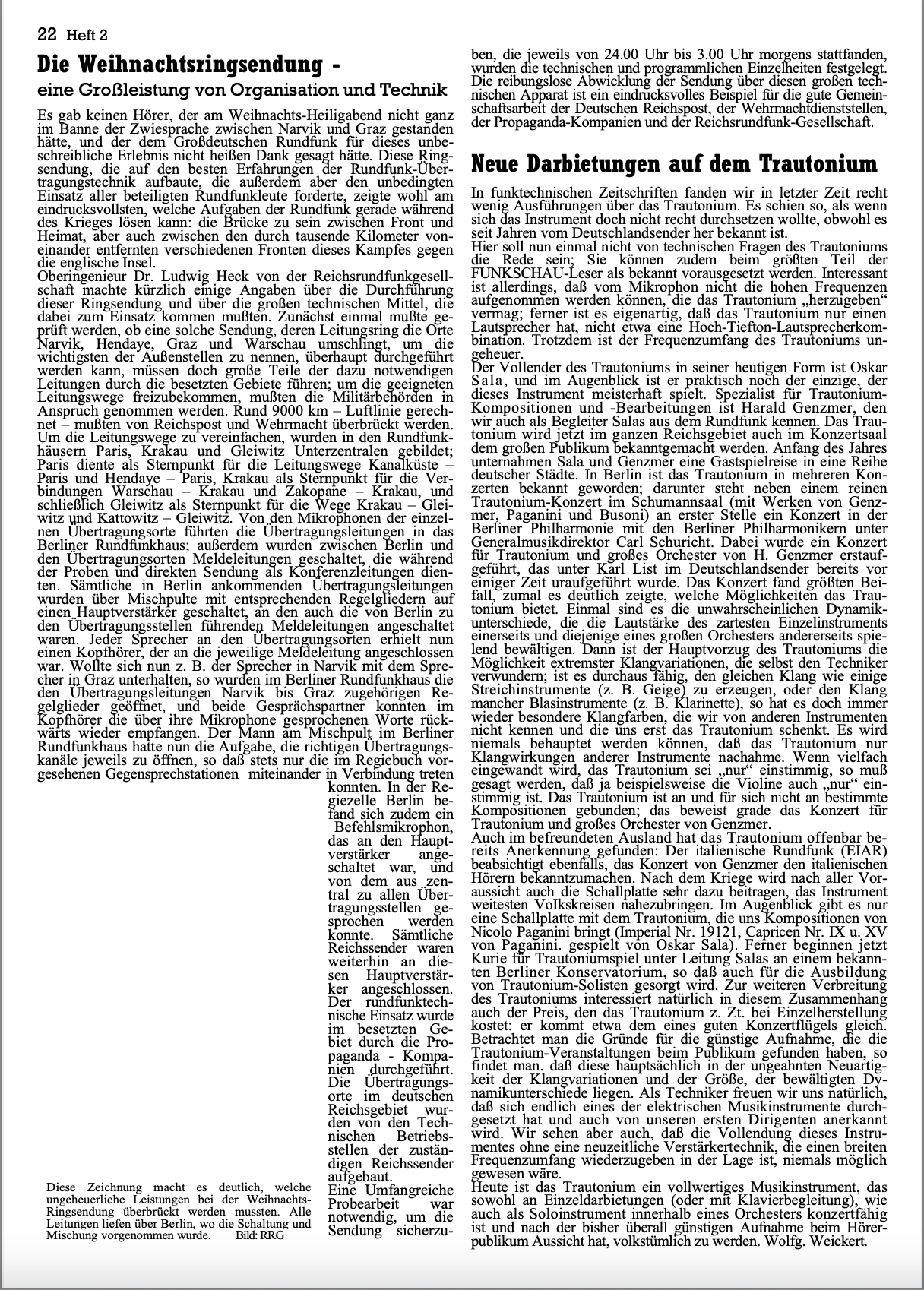
56.Philips156UBV_Zehn Jahre nationalsozialistische Rundfunktechnik (Whole PDF on Atlas)
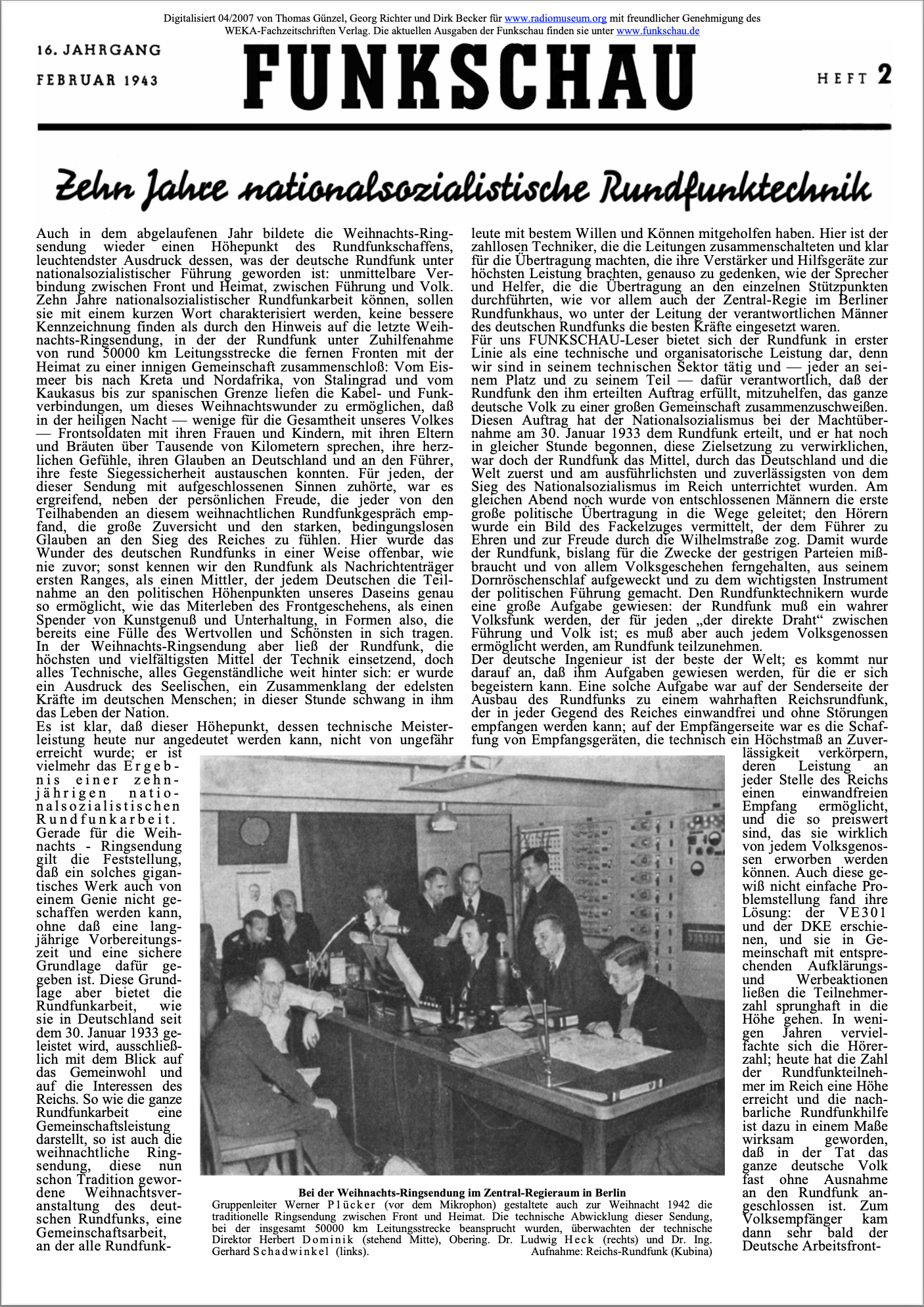
57.Philips156UBV_MailPictureAndTexts_DeutschesRundfunkArchiv (There are TV-Programmes in the Deutsches Rundfunkarchiv)

Internet Resources:
‘Philips 156 UBV‘, radiomuseum-bocket.de, Link.
‘Philips 156 ubv schematic‘, audioservicemanuals.com, Link.
‘156 UBV‘, Radiomuseum.org, Link.
‘156 UBV‘, Radiomuseum.org, Link.
‘PHILIPS 156 UBV - WWII GERMAN WEHRMACHT OFFICER RADIO‘, worthpoint.com, Link.
‘Philips-Empfänger : Typenschlüssel der Betriebsarten Versorgungsarten Betriebsspannungen‘, gfgf.org, Link.
‘Philips 156 UBV‘, doctsf.com, Link.
Bibliography:
ALEAZ, Bonita, Community Radio and Empowerment, in: Economic and Political Weekly 45/16 (2010), p. 39-32.
BALFOUR, Michael, In Retrospect: Britain’s Policy of “Re-Education”, in: PRONAY, Nicholas/WILSON, Keith (ed.), The Political Re-Education of Germany and her Allies after World War II, London/Sydney : Croom Helm, 1985, p. 139-150.
BARNOUW, Erik, Propaganda at Radio Luxembourg : 1944-1945, in: SHORT, Kenneth (ed.), Film & Radio Propaganda in World War II (Routledge Library Editions : WW2, 9), London : Routledge, 1983, p. 192-197.
BIRDSALL, Carolyn, Nazi Soundscapes, Sound, Technology and Urban Space in Germany, 1933-1945, Amsterdam : Amsterdam University Press, 2012.
BONACKER, Max, Goebbels’ Mann beim Radio. Der NS-Propagandist Hans Fritzsche (1900-1953) (Schriftenreihe der Vierteljahrshefte für Zeitgeschichte, 94), München : Oldenbourg Verlag, 2007.
CAMPBELL, Bruce, The Radio Hobby, Private Associations, and the Challenge of Modernity in Germany (Palgrave Studies in the History of Science and Technology), Hampshire : Palgrave Macmillan, 2019.
CHIGNELL, Hugh, Key concepts in radio studies, Los Angeles : SAGE, 2009.
JURRIËNS, Edwin, Radio komunitas and the imagination of community, in: JURRIËNS, Edwin (ed.), From Monologue to Dialogue. Radio and Reform in Indonesia, Leiden : Brill, 2009, p. 141-158.
MARßOLEK, Inge, Radio in Deutschland 1923-1969. Zur Sozialgeschichte eines Mediums, in: Geschichte und Gesellschaft 27/2 (2001), p. 207-239.
METSU, Pierre, Les matériels radio de la Wehrmacht : 1935-1945, Bayeux : Heimdal, 2004. (Musée nationale d’histoire militaire, not borrowable).
PATNODE, Randall, “What These People Need Is Radio”. New Technology, the Press, and Otherness in 1920s America, in: Technology and Culture 44/2 (2003), p. 285-305.
RIEGLER, Thomas, Meilensteine des Rundfunks. Daten und Fakten zur Entwicklung des Radios und Fernsehens, Meckenheim : Siebel, 2009.
ROSS, Corey, Media and the Making of Modern Germany. Mass Communications, Society, and Politics from the Empire to the Reich, Oxford : Oxford University Press, 2008.
SCHRADE, Dominik, “Singt alle mit uns gemeinsam in dieser Minute”. Sound als Politik in der Weihnachtsringsendung 1942, in: GETHMANN, Daniel/STAUFF, Markus (ed.), Politiken der Medien, Zürich/Berlin : diaphanes, 2005, p. 267-285.
THOMPSON, Willie, Imagined Communities. Signs and Symbols, Identities and Nations, in: THOMPSON, Willie (ed.), Work, Sex and Power. The Forces that Shaped our History, London : Pluto Press, 2015, p. 145-163.
VESELY, Alois/KORÁN, Frantisek, Wireless for Wehrmacht. German Radio Equipment in World War II, Prague : RAK, 1999. (Musée nationale d’histoire militaire, not borrowable).
WELCH, David, Nazi Propaganda and the Volksgemeinschaft. Constructing a People’s Community, in: Journal of Contemporary History 39/2 (2004), p. 213-238